Categories
Sedimentary Rocks
Sedimentary rocks are formed from pre-existing rocks that have undergone weathering (the breakdown of rock into smaller fragments caused by physical and chemical events) and transportation (moved from one location to another by wind, water, animals, etc.). Sedimentary rocks can further be categorized into three main groups based on which processes formed the rock:
- Clastic sedimentary rocks: These result from the lithification of unconsolidated (loose) sediment. Sediment can be many different sizes, including small grains of clay and sand, up to large pebbles or cobbles. Lithification is a process that involves compaction of the sediment layers and cementation. Cementation is when water-soluble minerals fill the cracks between each individual sediment grain, gluing them all together to form a solid rock. Some examples include sandstone, conglomerate, or shale.
- Chemical sedimentary rocks: These rocks form when a solution is supersaturated in elements that are constituents for minerals. Given the appropriate physical conditions, minerals precipitate out of the solution and form solid rocks. Some examples include limestone, banded iron formation, or rock salt.
- Biochemical/organic sedimentary rocks: These rocks form from the accumulation of organic debris, including remains from plants or animals. Biochemical sedimentary rocks are different from chemical sedimentary rocks because living organisms play a major role in turning the chemical constituents into solid rock. Some examples include coal, fossilized coral, or coquina.
| Picture | Rock Number | Rock Name | Process of Formation |
|---|---|---|---|
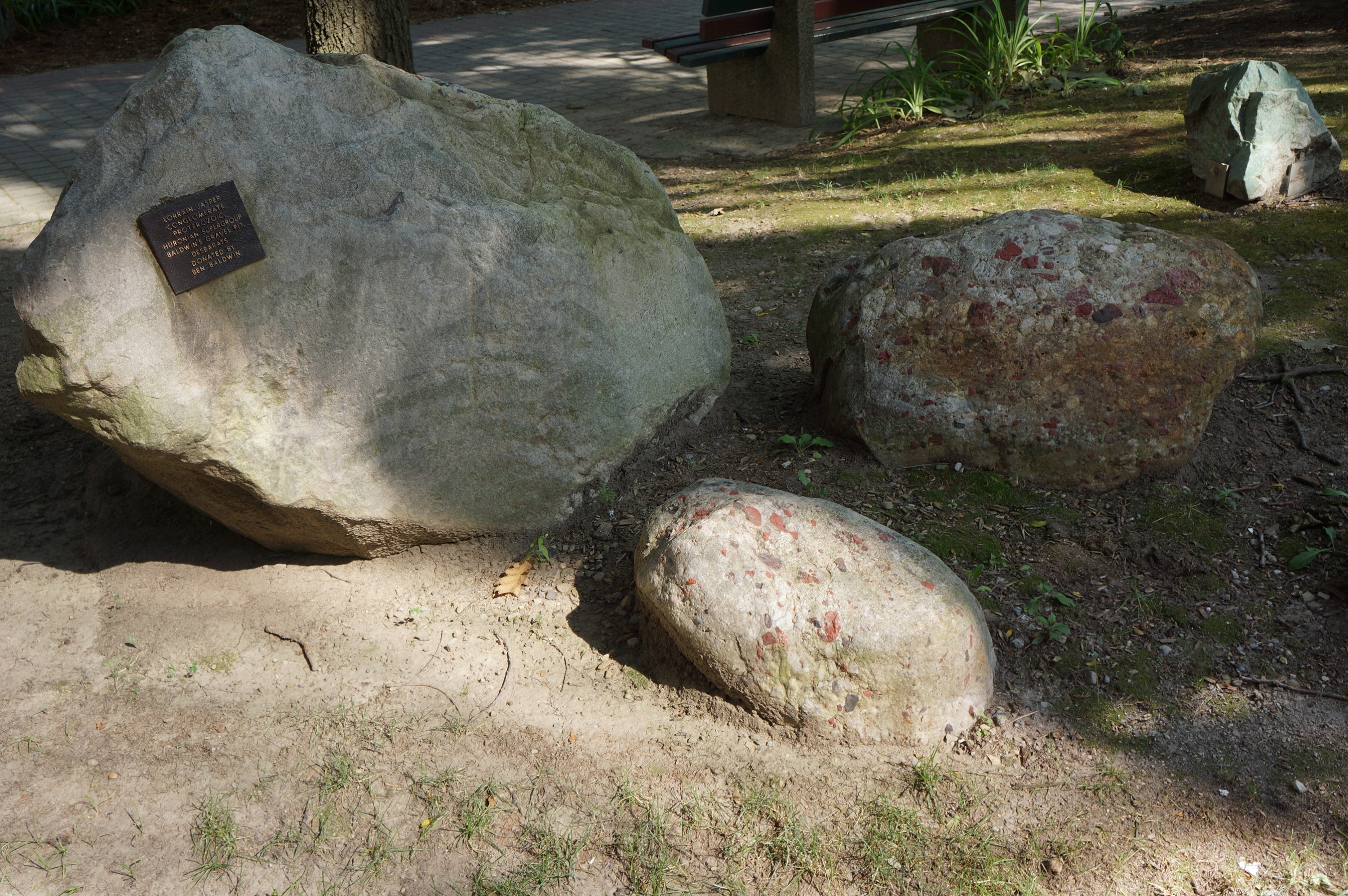 |
1 | Jasper conglomerate | Clastic |
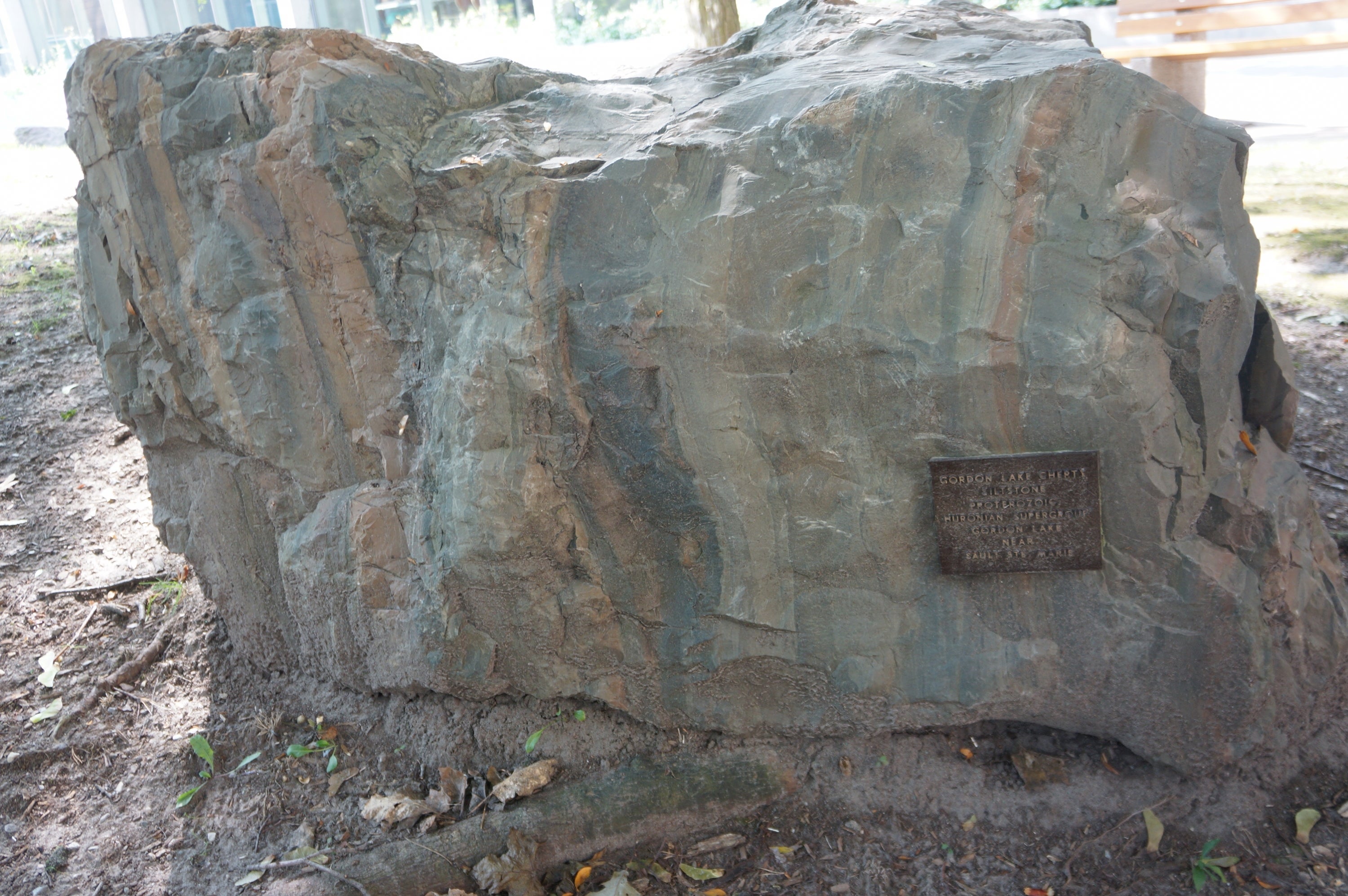 |
4 | Gordon Lake cherty siltstone | Clastic |
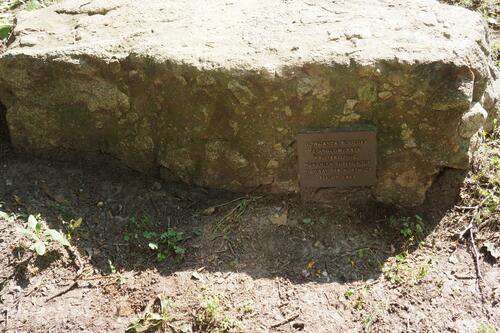 |
5 | Gowganda conglomerate | Clastic |
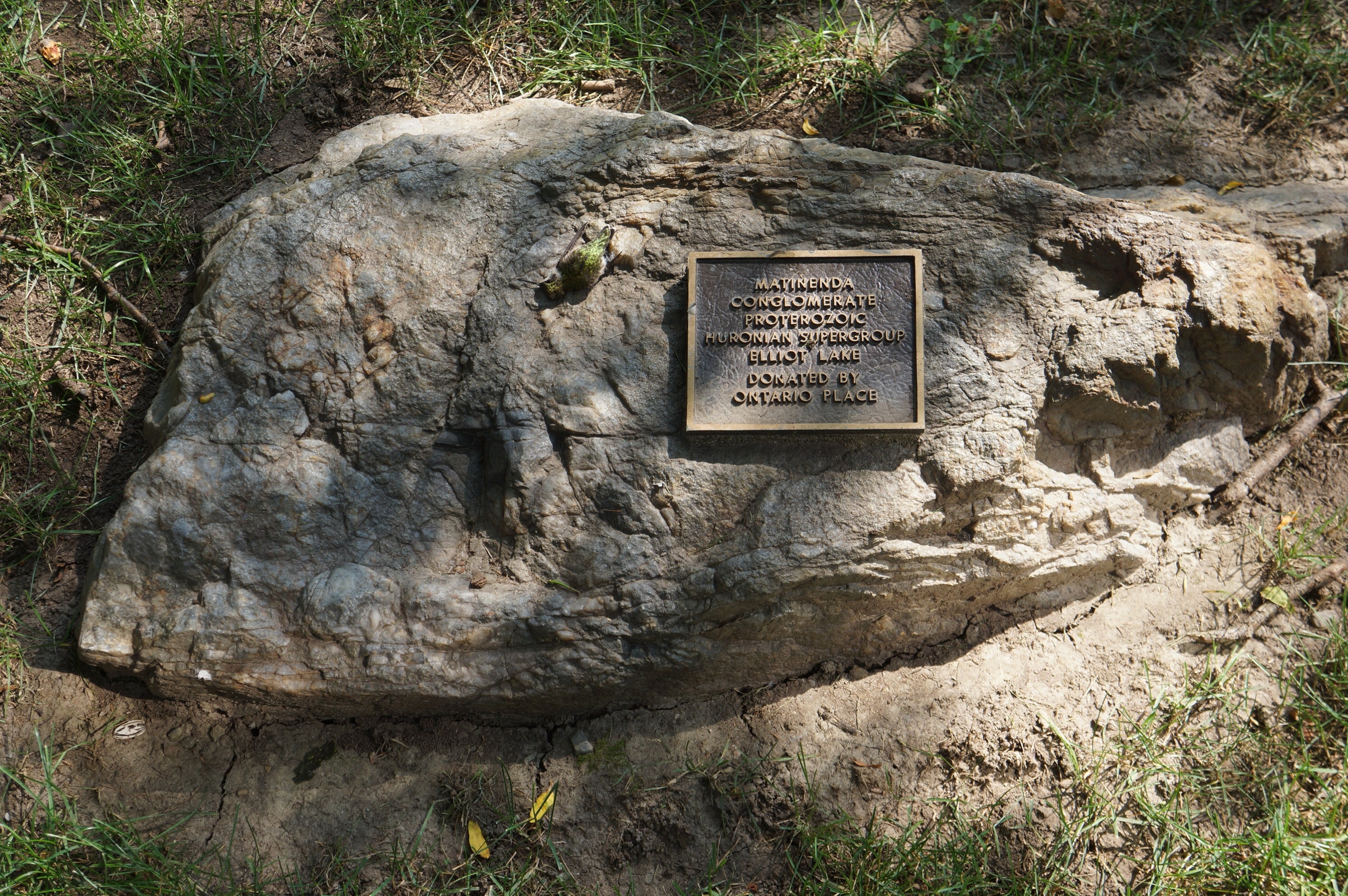 |
6 | Matinenda conglomerate | Clastic |
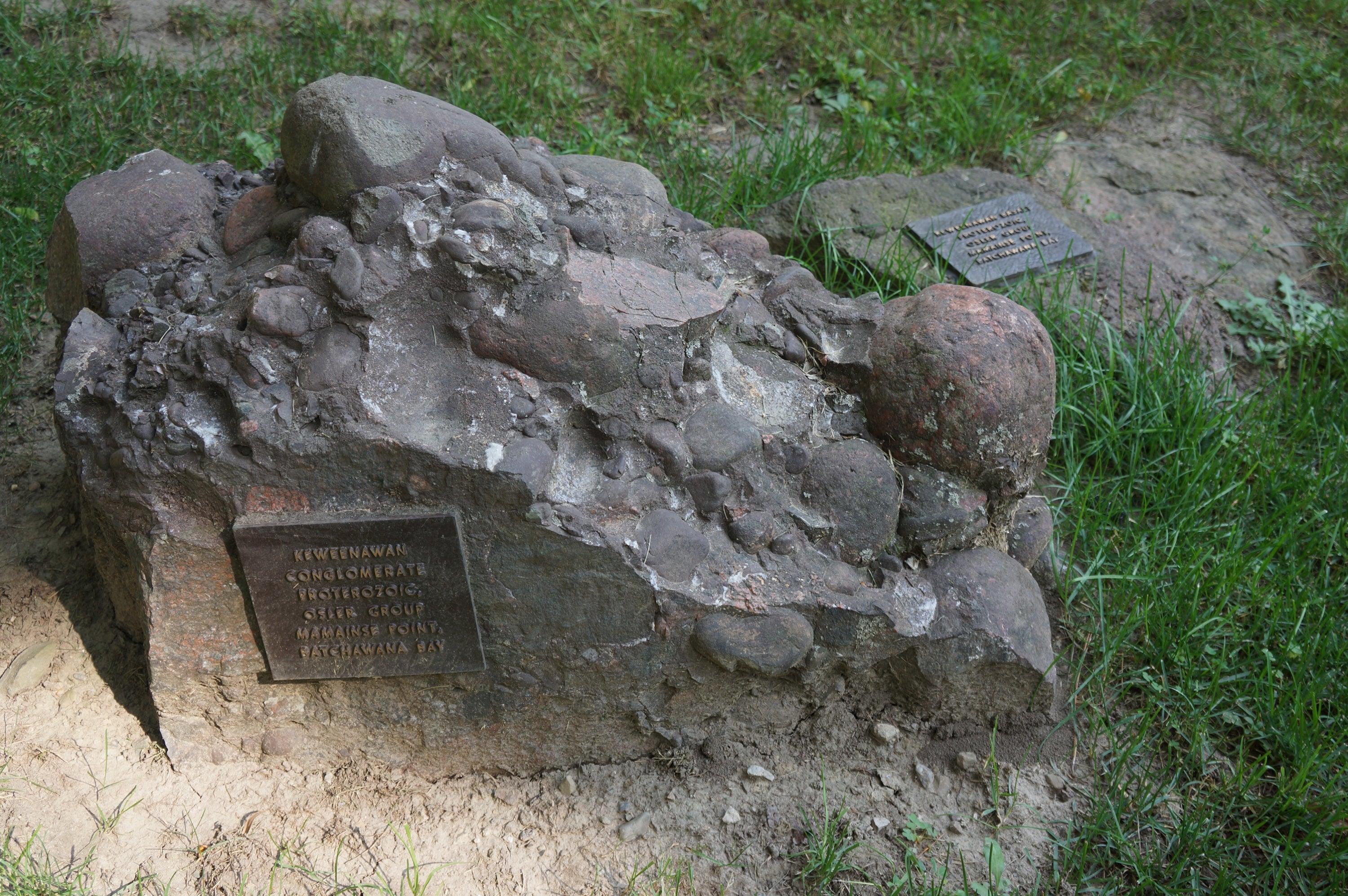 |
7 | Keweenawan conglomerate | Clastic |
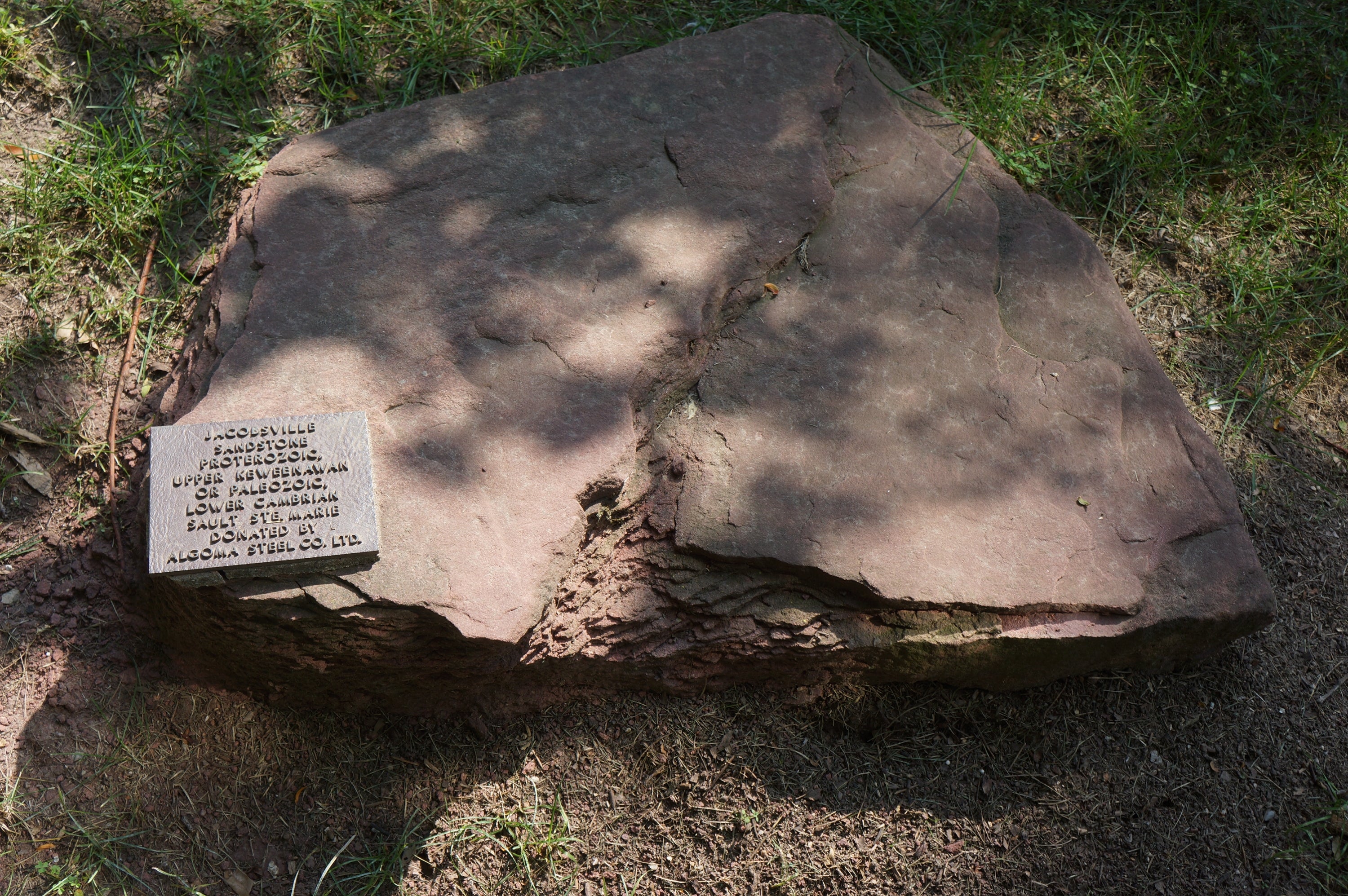 |
9 | Jacobsville sandstone | Clastic |
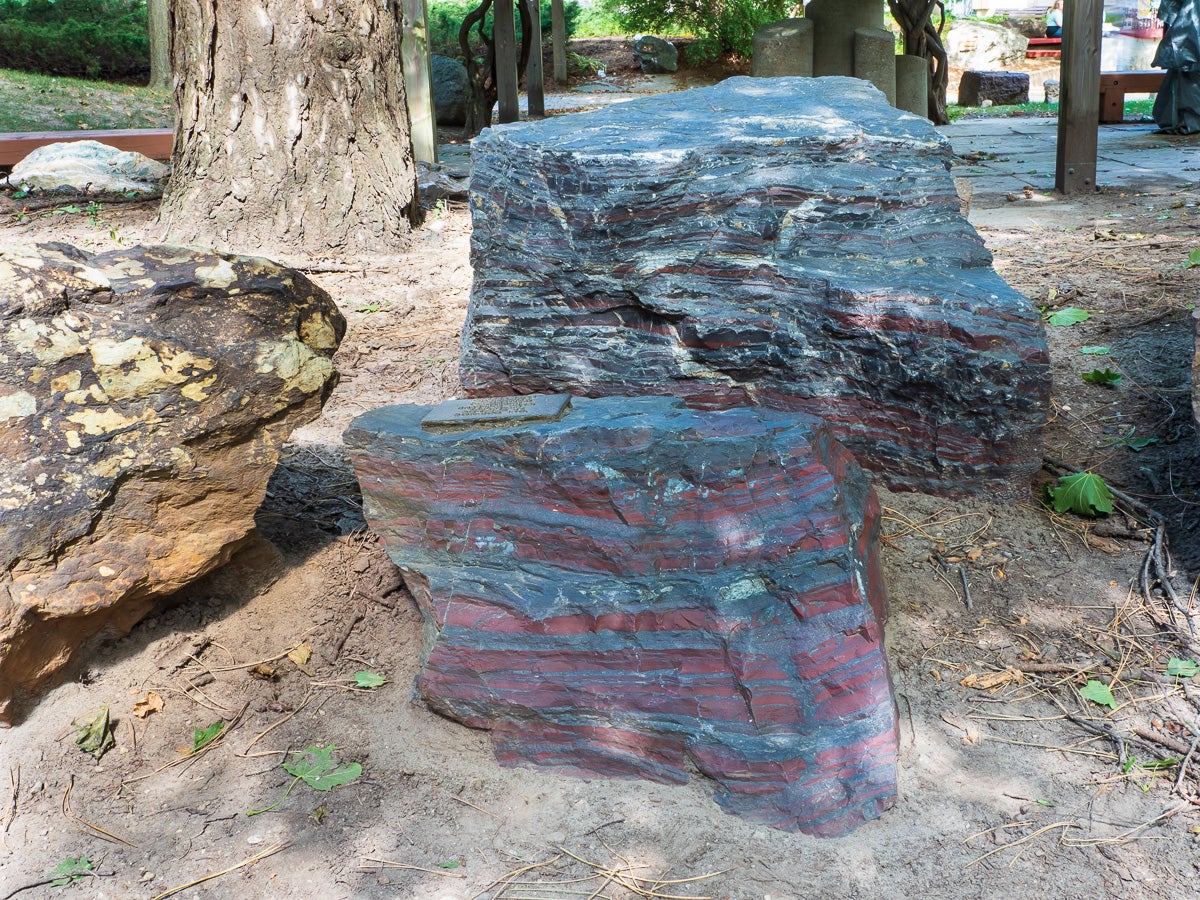 |
20 | Banded iron formation (magnetite) | Chemical |
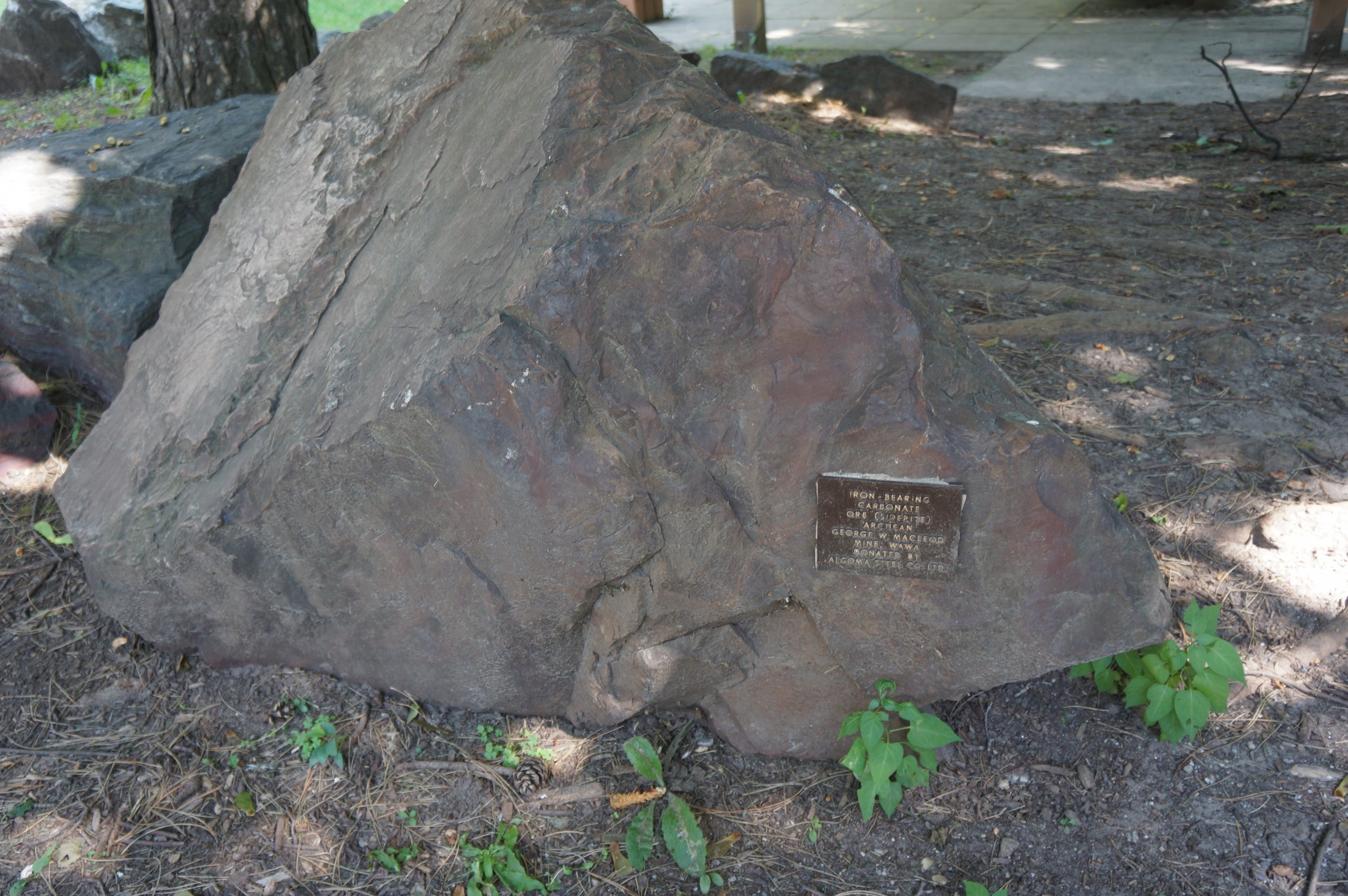 |
21-22 | Siderite | Chemical |
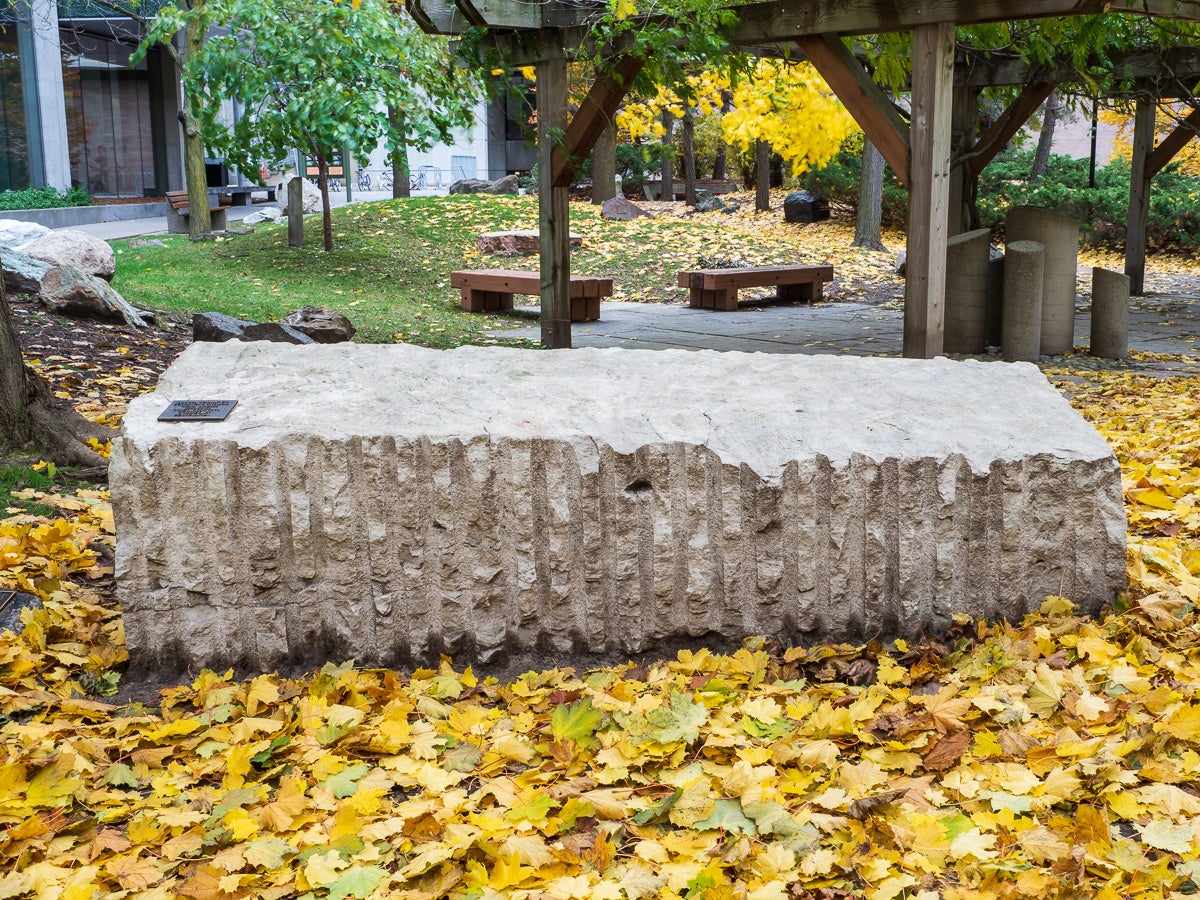 |
24 | Amabel dolostone | Chemical |
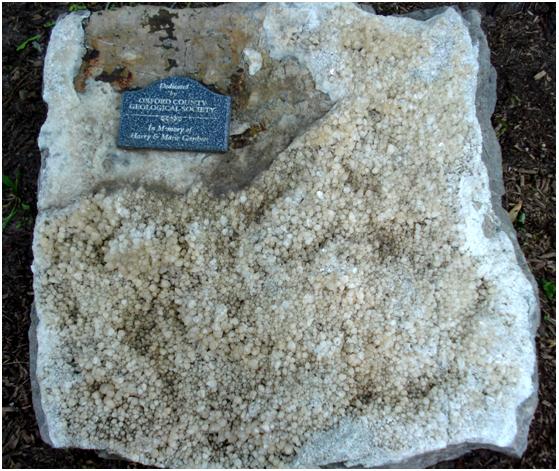 |
25 | Lockport dolostone | Chemical |
| 26-27 | Dolostone with calcite | Chemical | |
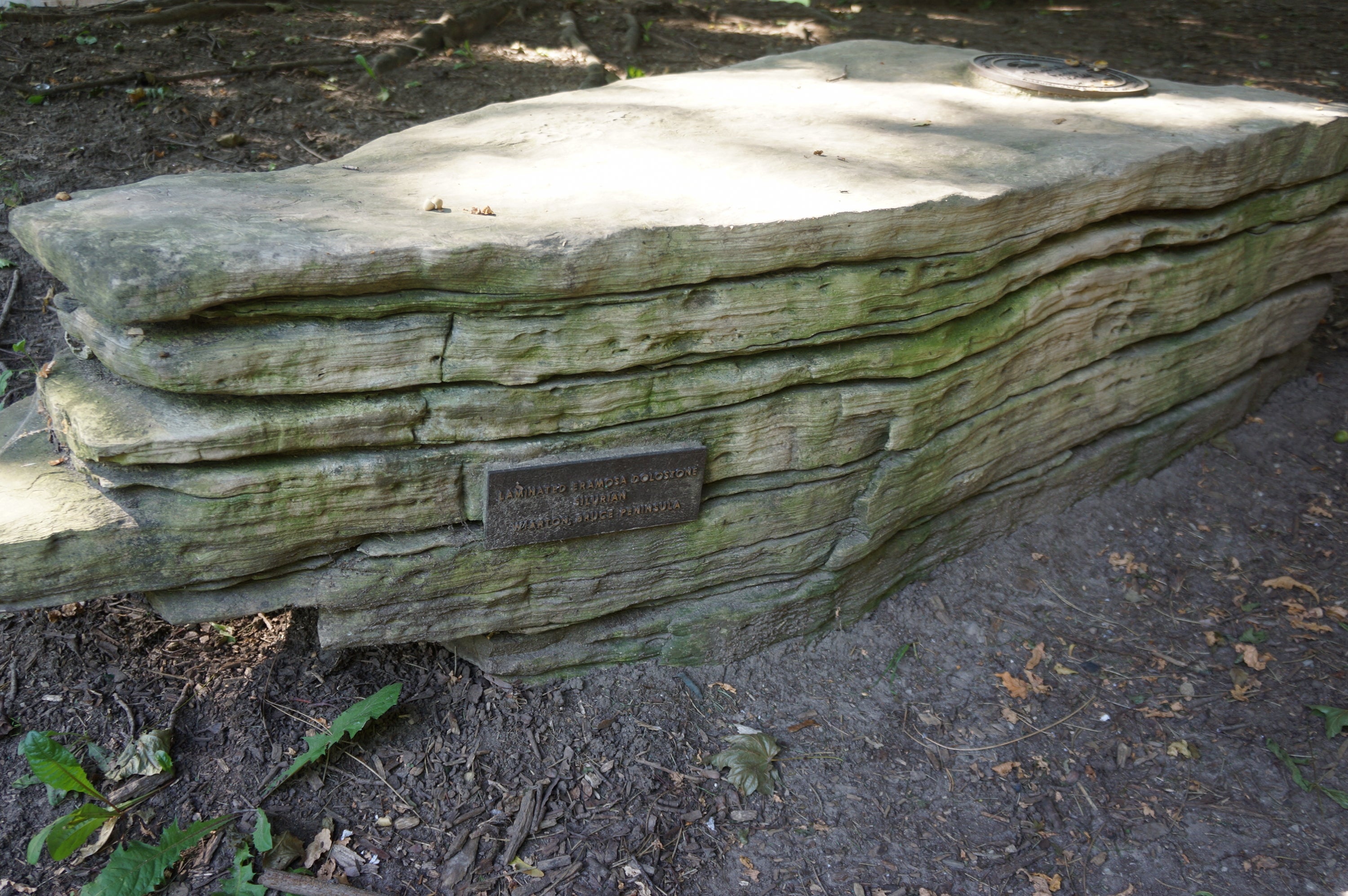 |
28 | Laminated Ermosa dolostone | Chemical |
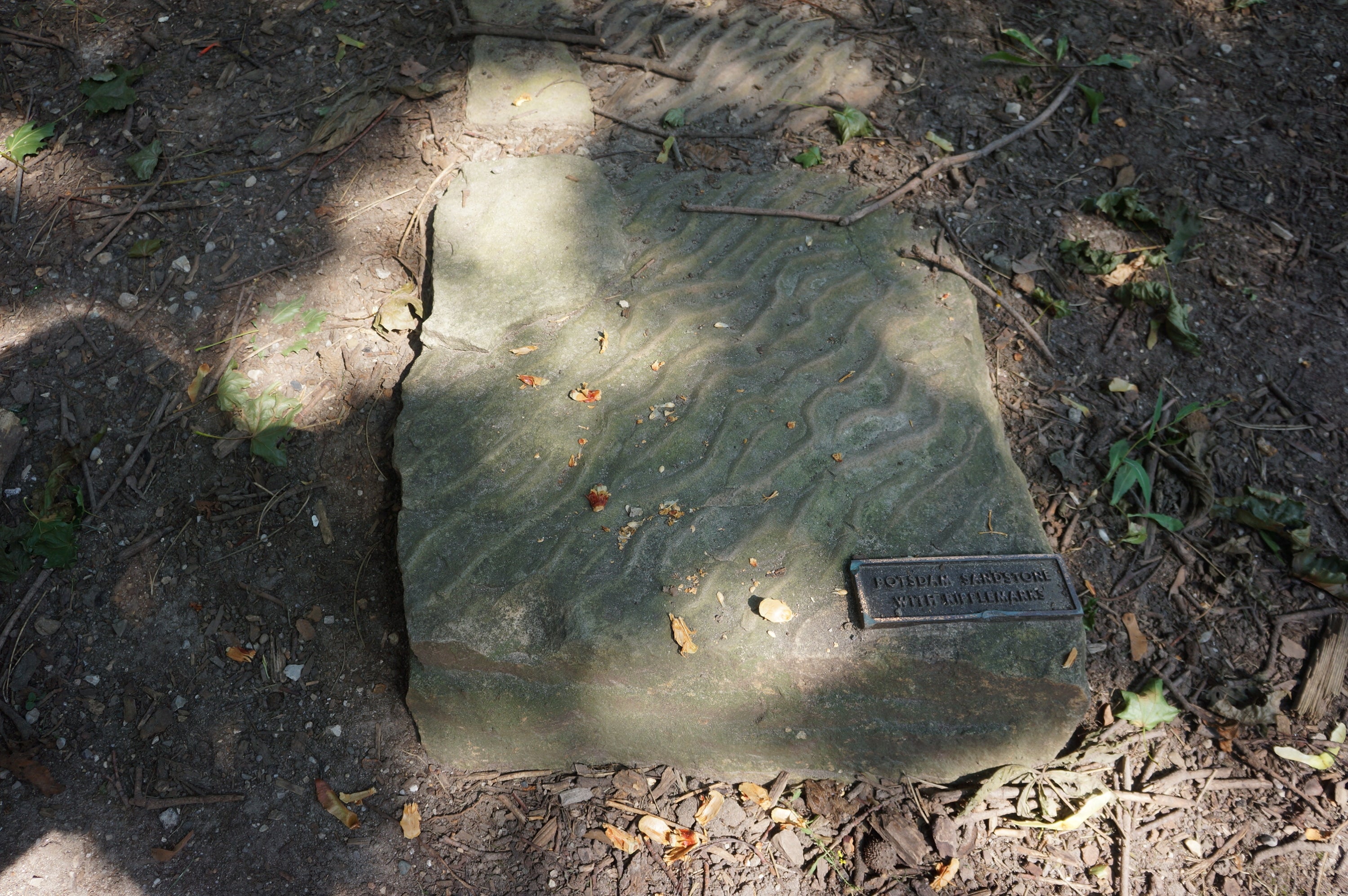 |
29-31 | Potsdam sandstone | Clastic |
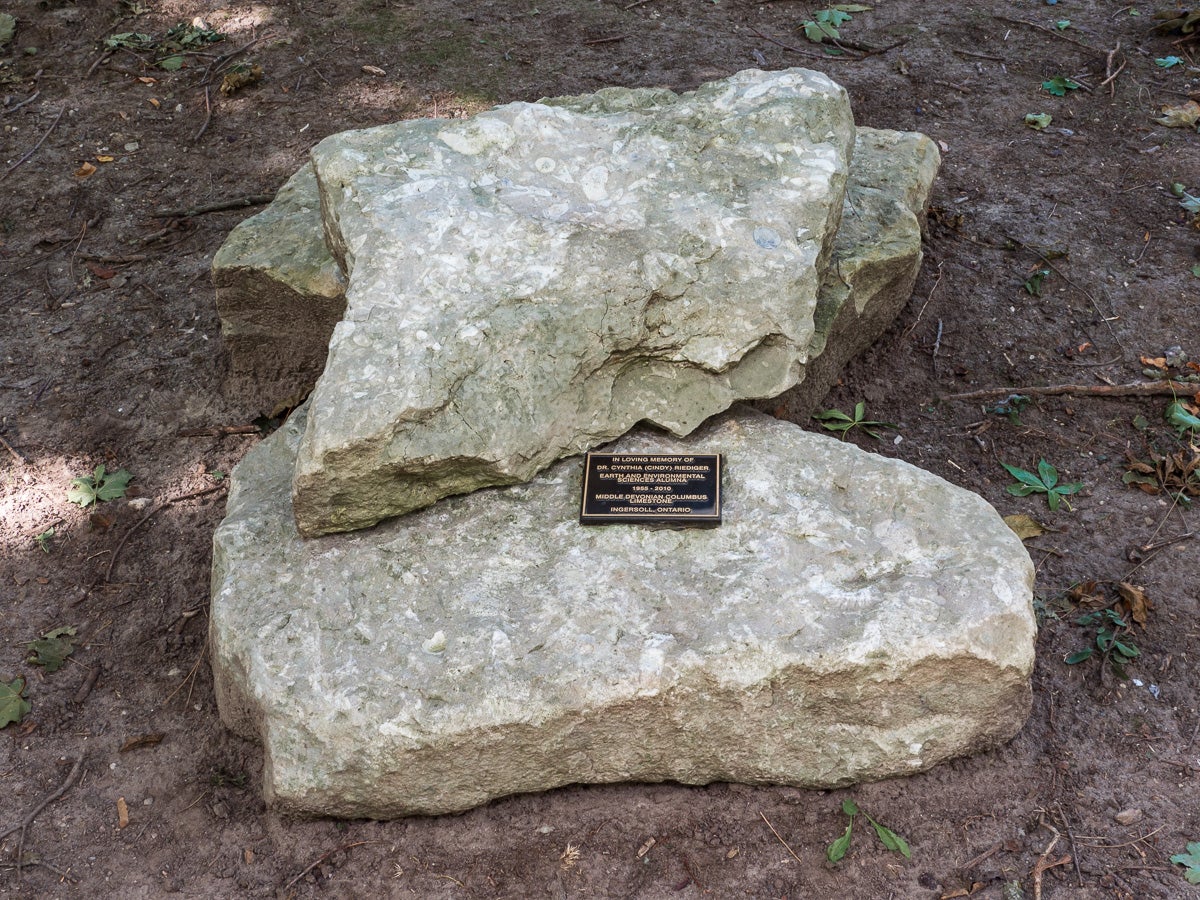 |
35 | Columbus limestone | Chemical |
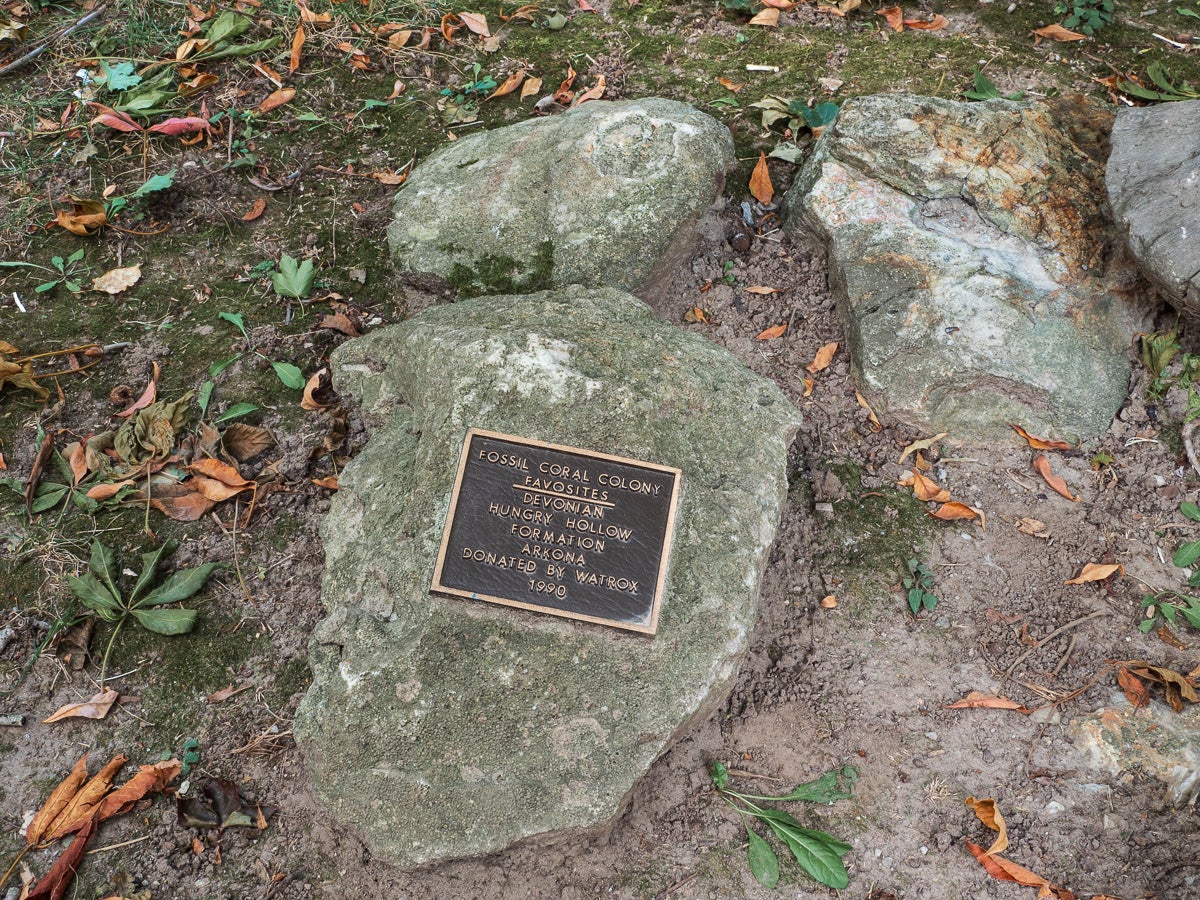 |
38 | Fossil coral colony favosites | Organic |
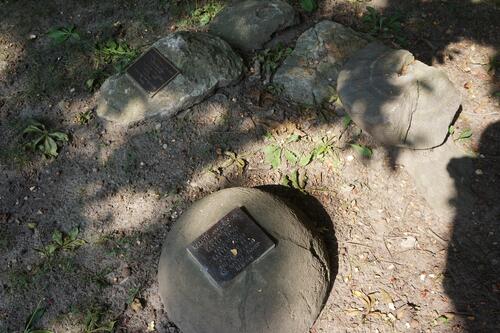 |
39 | Calcite concretions | Chemical |
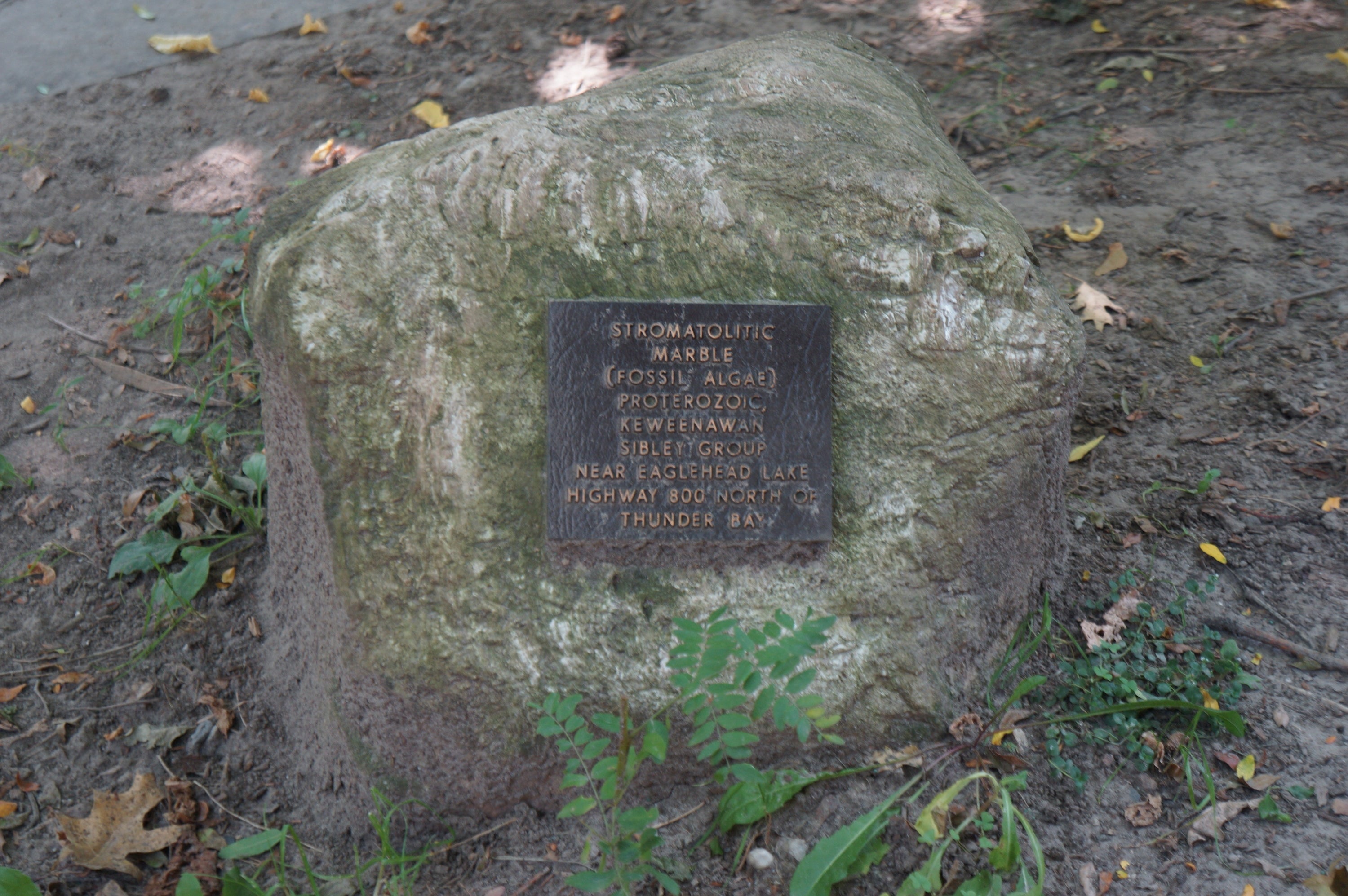 |
49 | Stromatolite marble | Organic |
 |
50 | Stromatolite fossils | Organic |
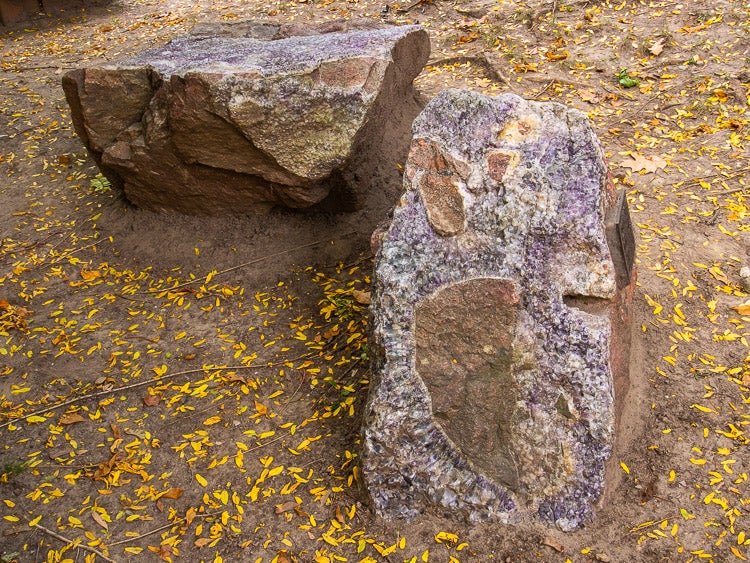 |
51 | Amethyst quartz Breccia | Clastic |
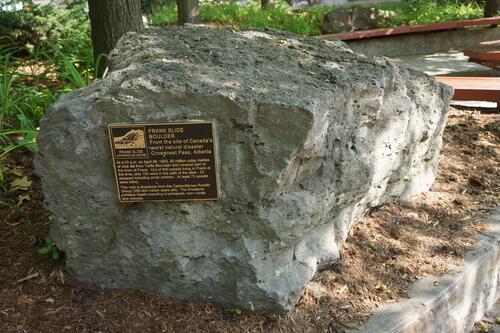 |
55 | Frank slide boulder | Chemical |
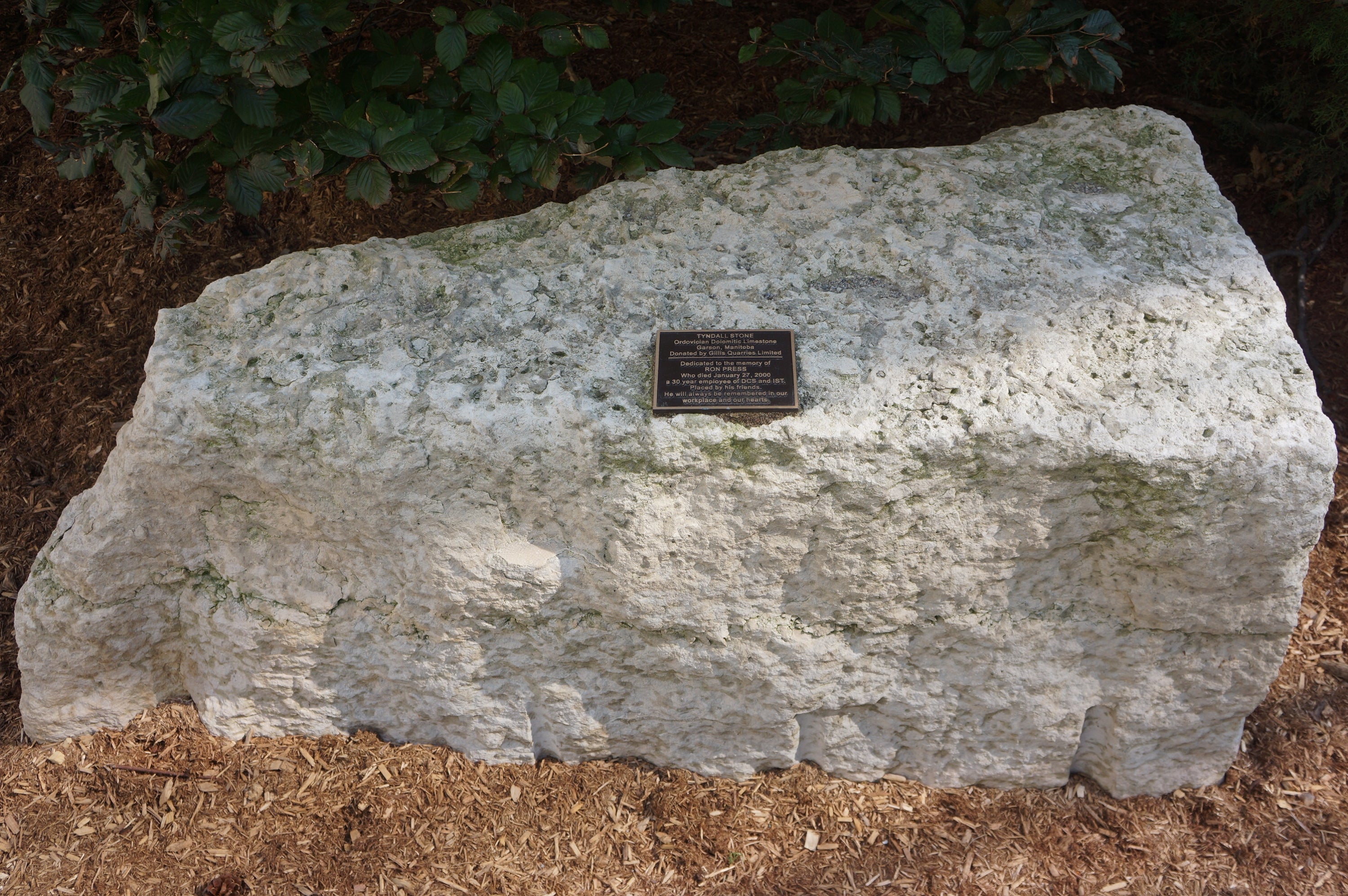 |
63 | Tyndall stone | Chemical |
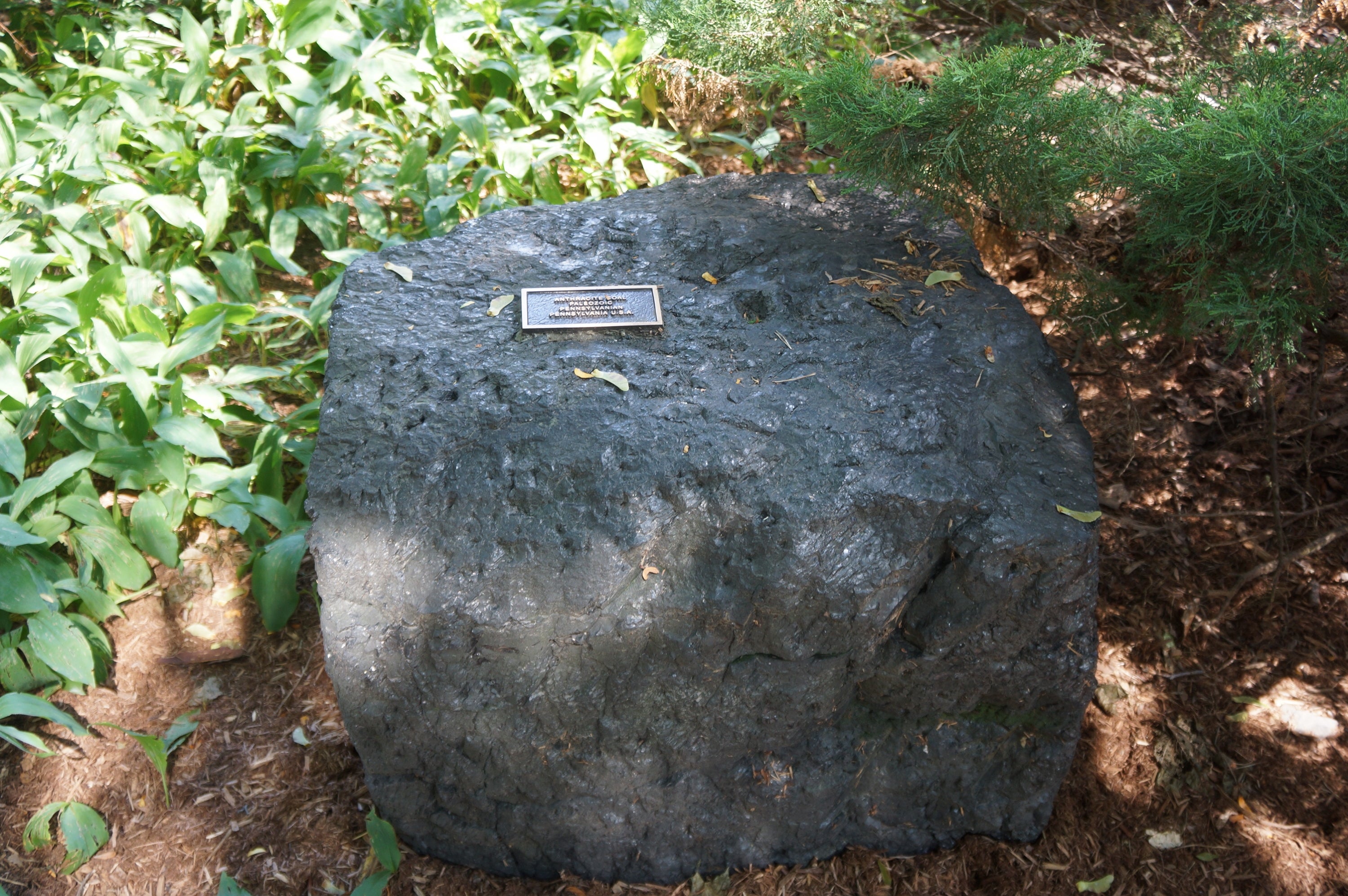 |
68 | Anthracite coal | Organic |
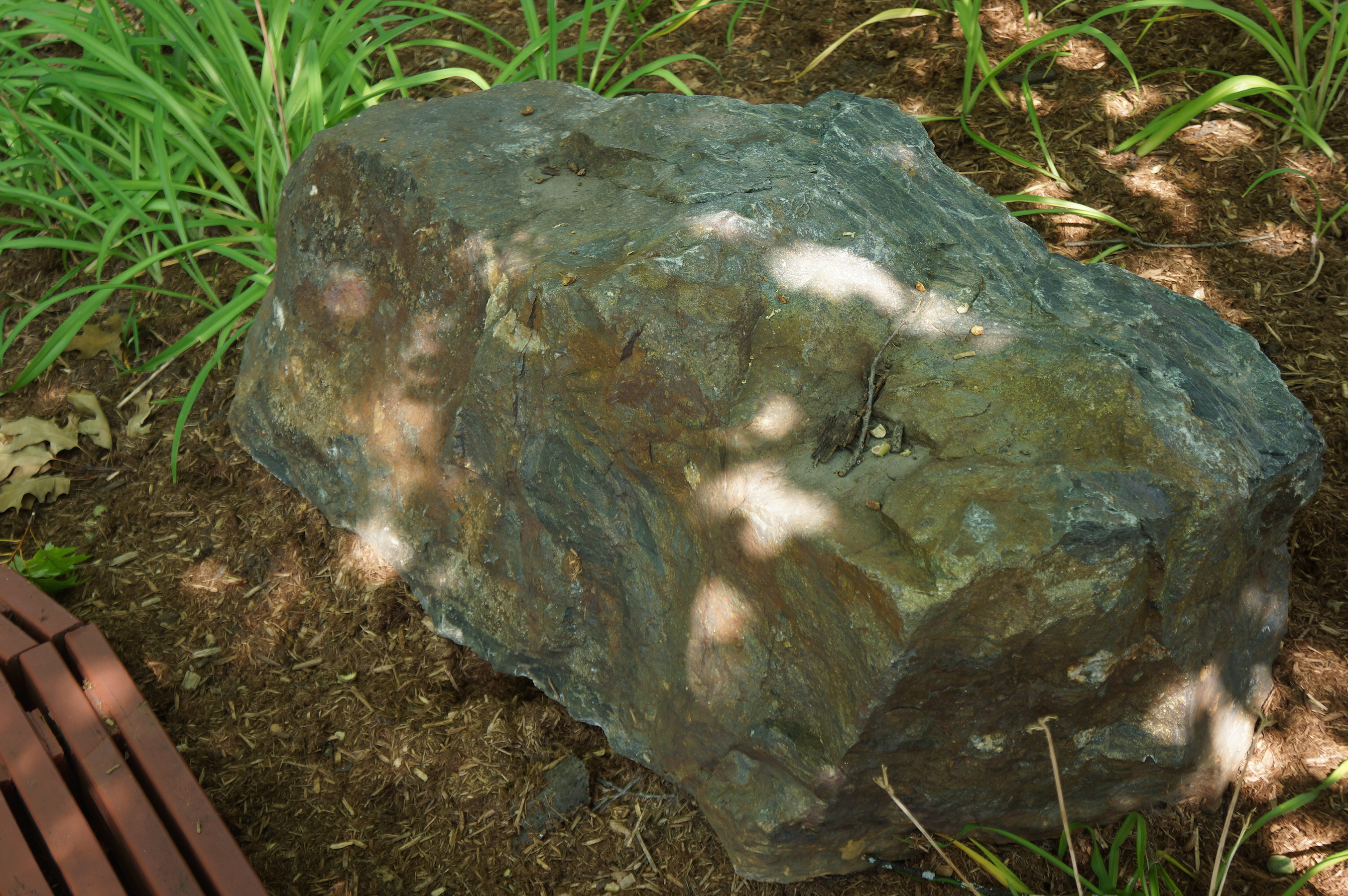 |
70 | Shear-hosted gold lode in breccia | Clastic |
| 77 | Wallace sandstone | Clastic | |
| 78 | Redbeds sandstone | Clastic |
Igneous Rocks
Igneous rocks are formed by the cooling and crystallization of hot, molten, liquid rock. If the liquid rock is above Earth's surface, it is called lava and cools to form extrusive igneous rocks. If the liquid rock is below Earth's surface, it is called magma and cools to form intrusive igneous rocks.
| Picture | Rock Number | Rock Name | Rock Formation |
|---|---|---|---|
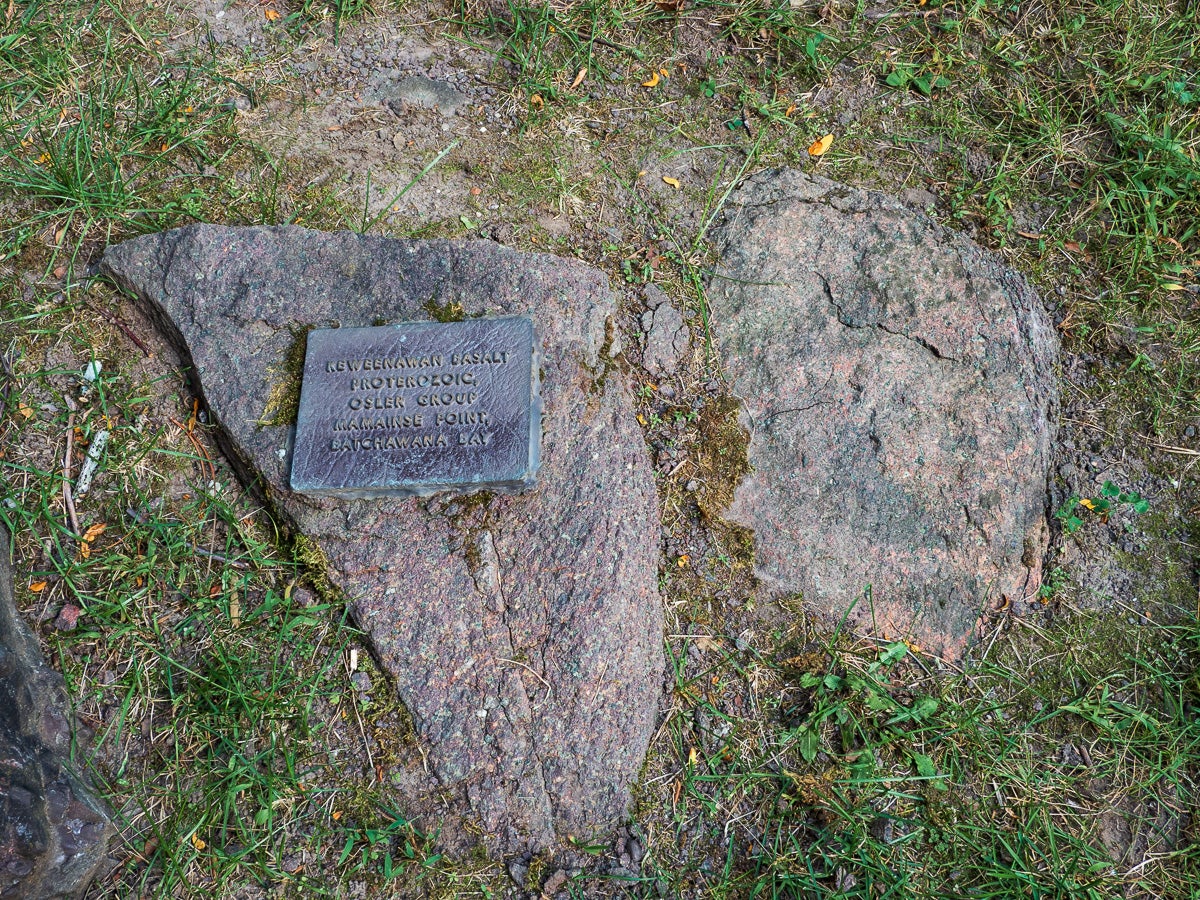 |
8 | Keweenawan basalt | Extrusive |
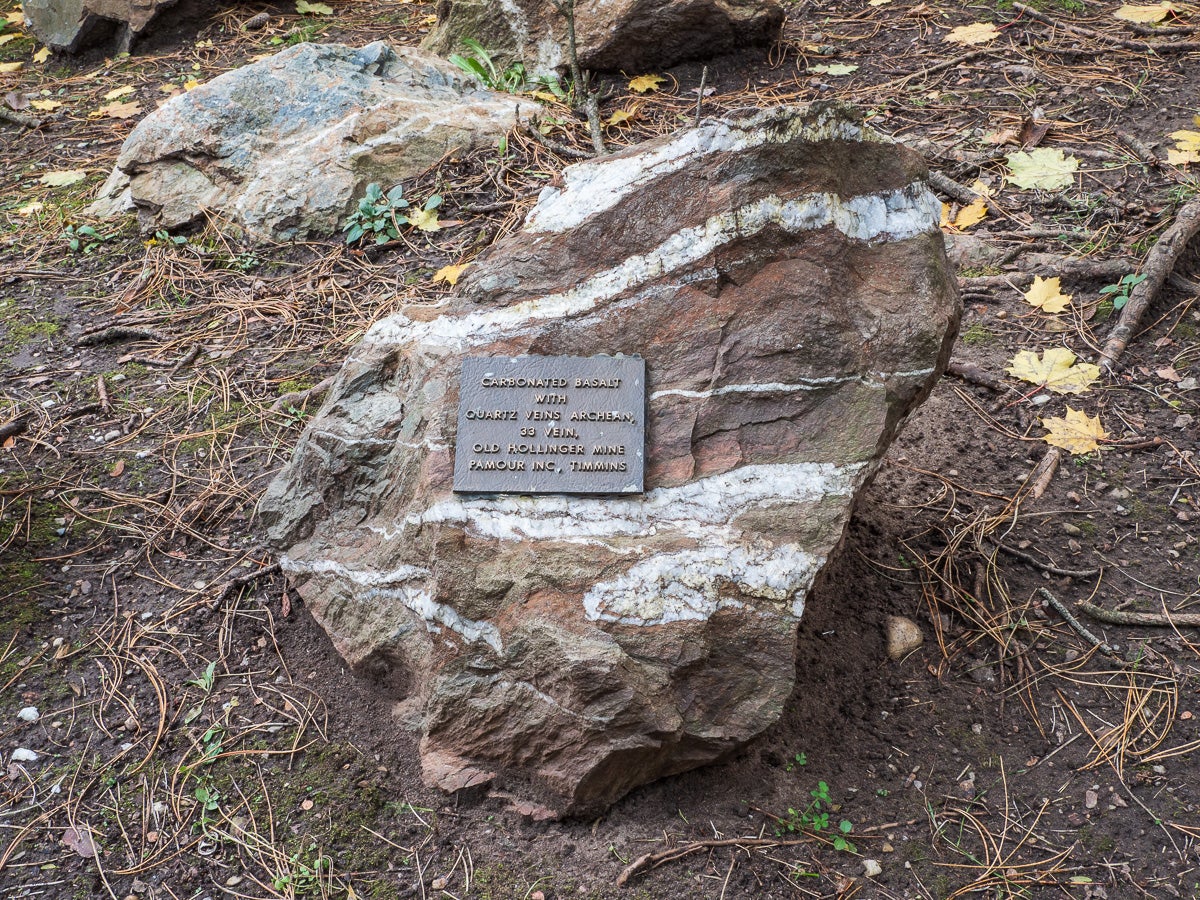 |
14 | Carbonated basalt with quartz veins | Extrusive |
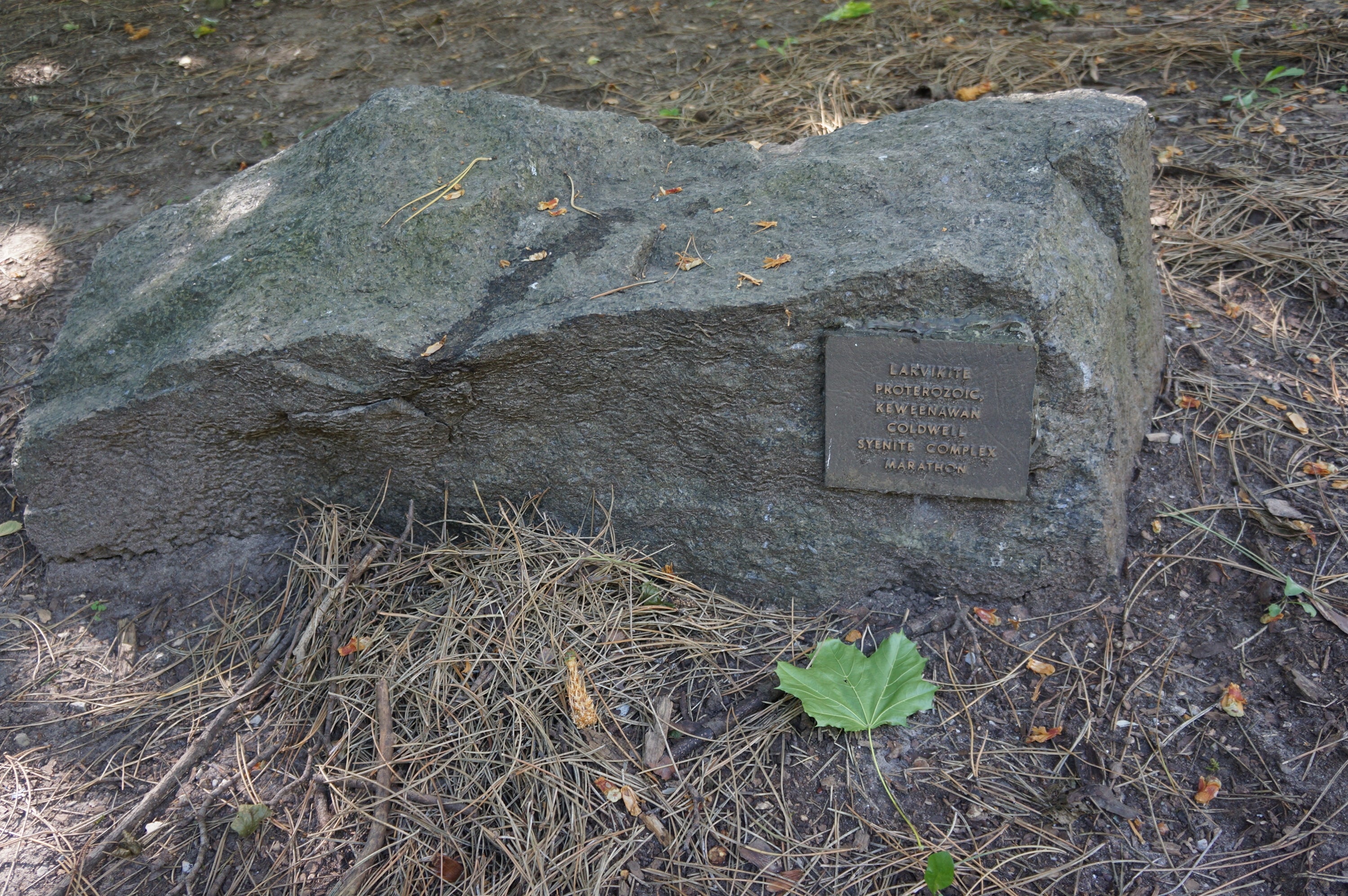 |
16 | Larvikite | Intrusive |
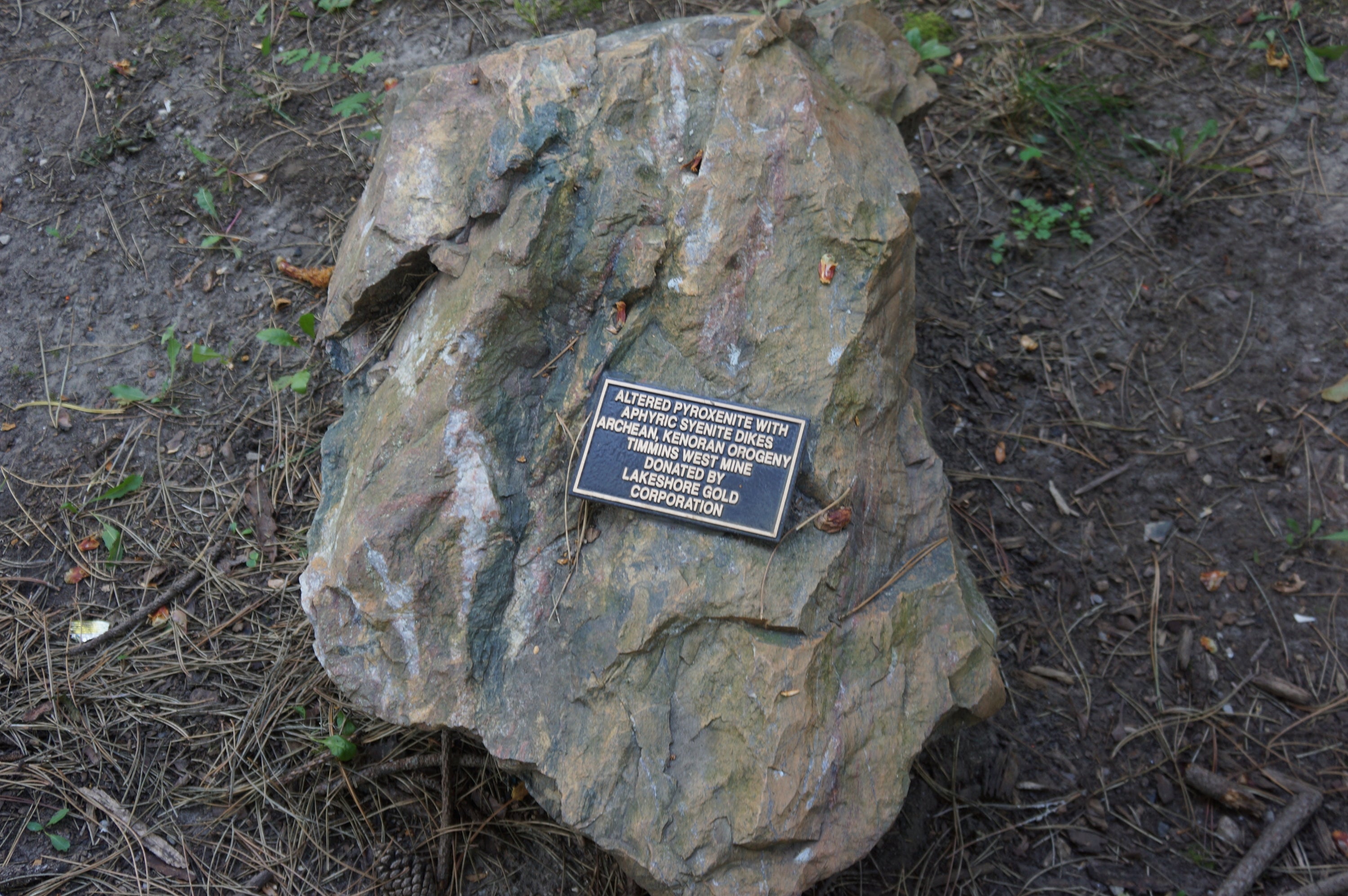 |
17 | Altered pyroxenite with aphyric syenite dikes | Intrusive |
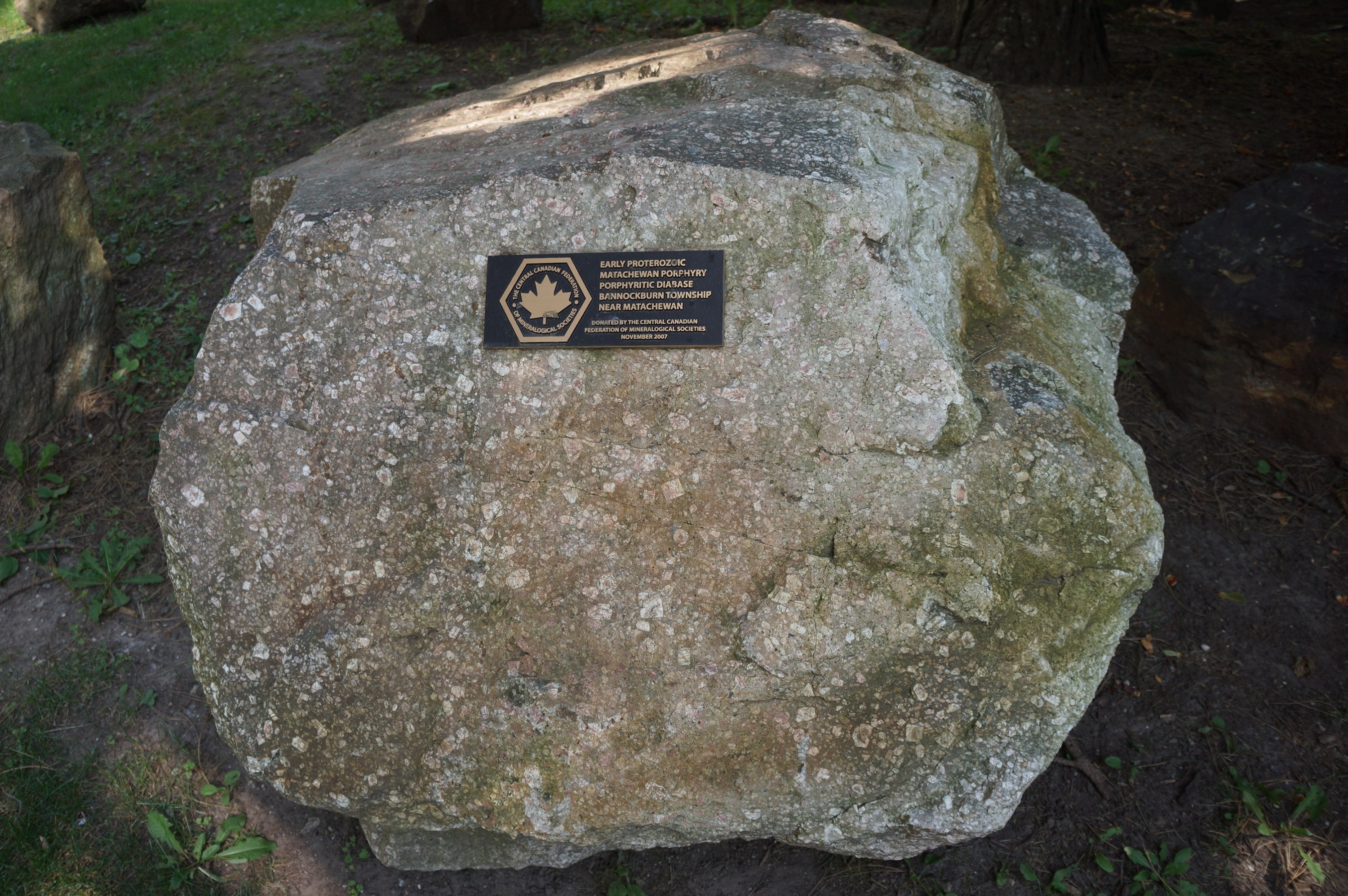 |
18 | Matachewan Porphyry or Granite DC | Intrusive |
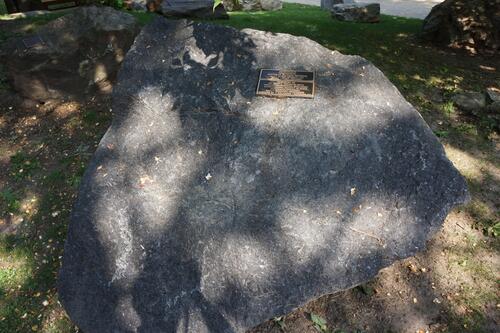 |
37 | Anorthosite | Intrusive |
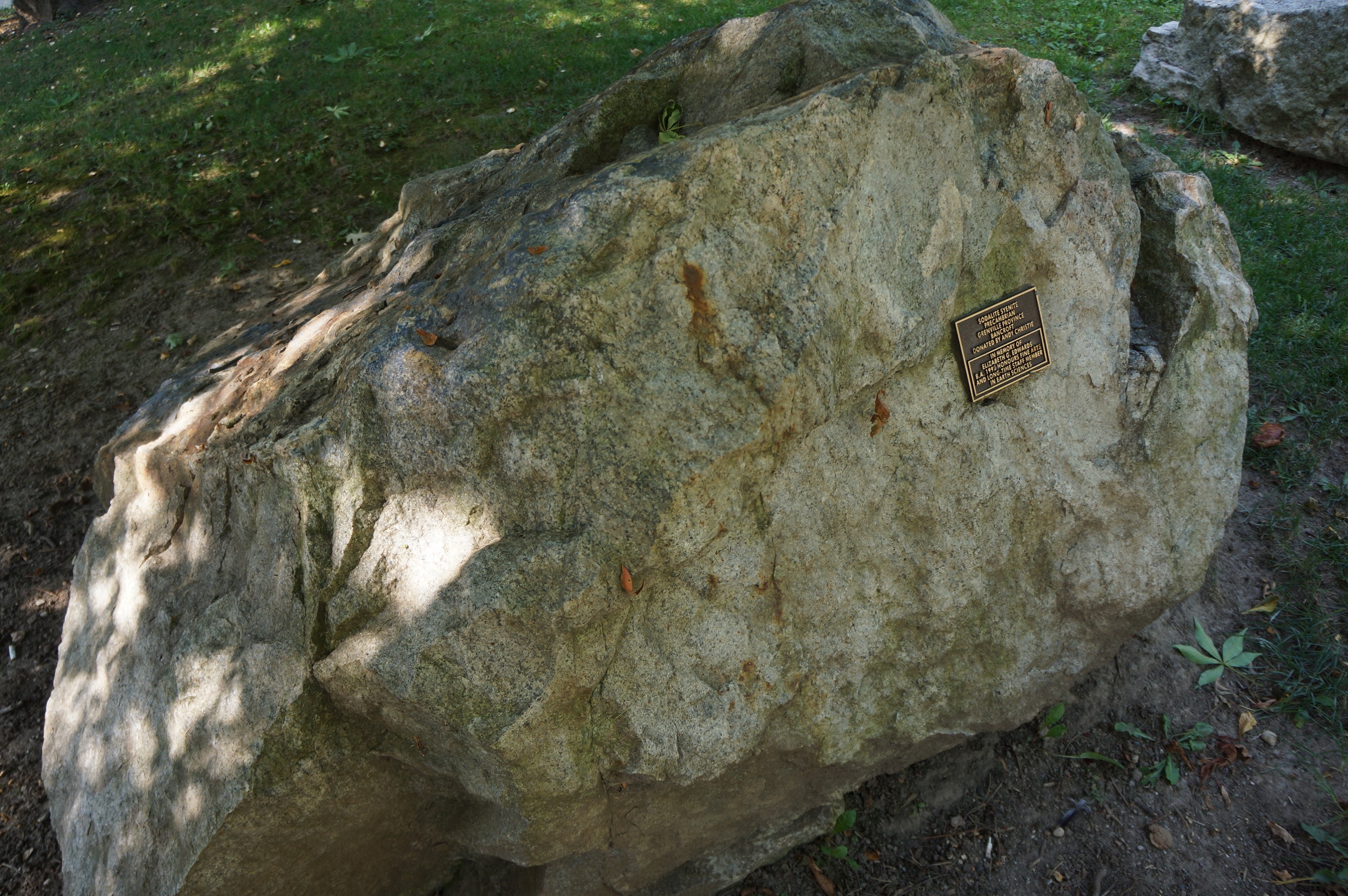 |
41 | Sodalite syenite | Intrusive |
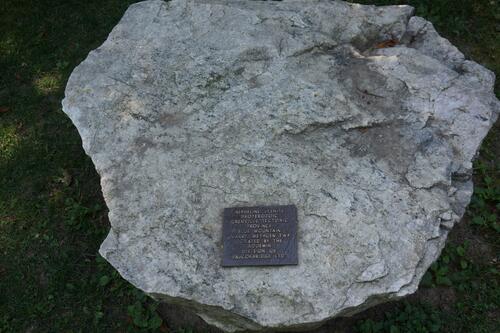 |
43 | Nepheline syenite | Intrusive |
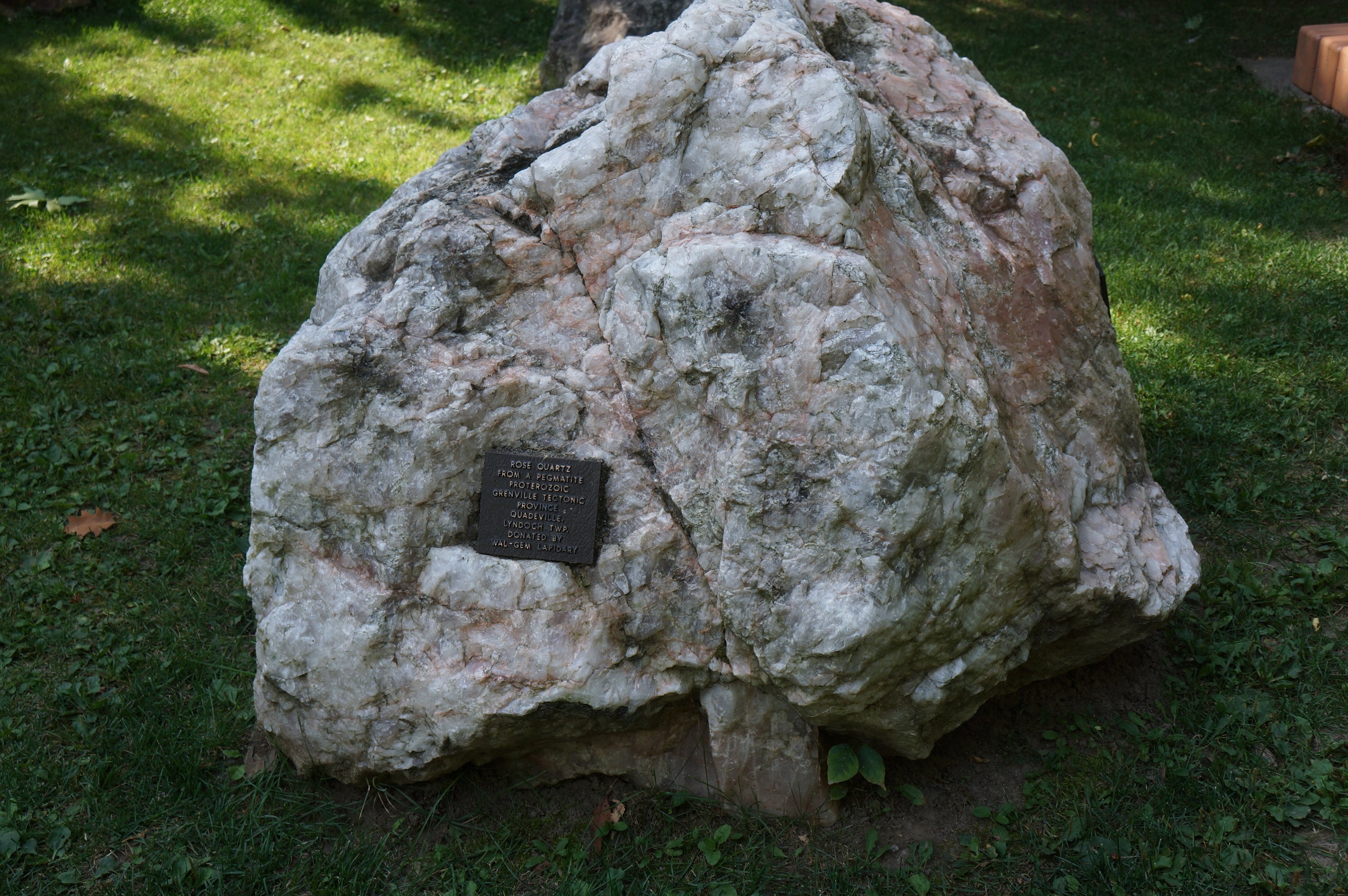 |
46 | Rose Quartz | Intrusive |
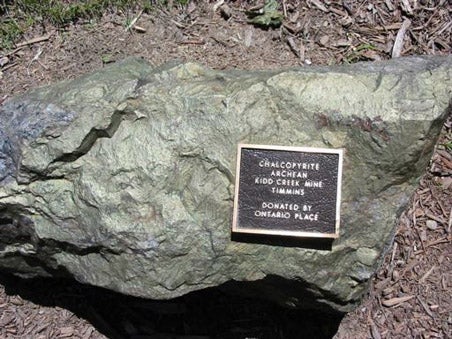 |
47 | Chalcopyrite | Intrusive |
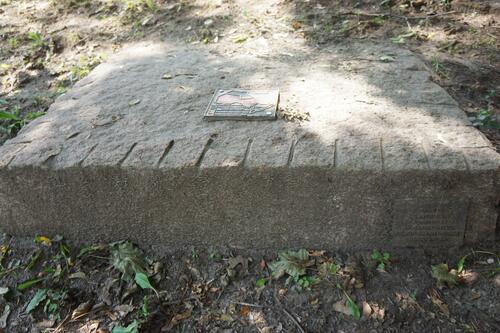 |
54 | Granite | Intrusive |
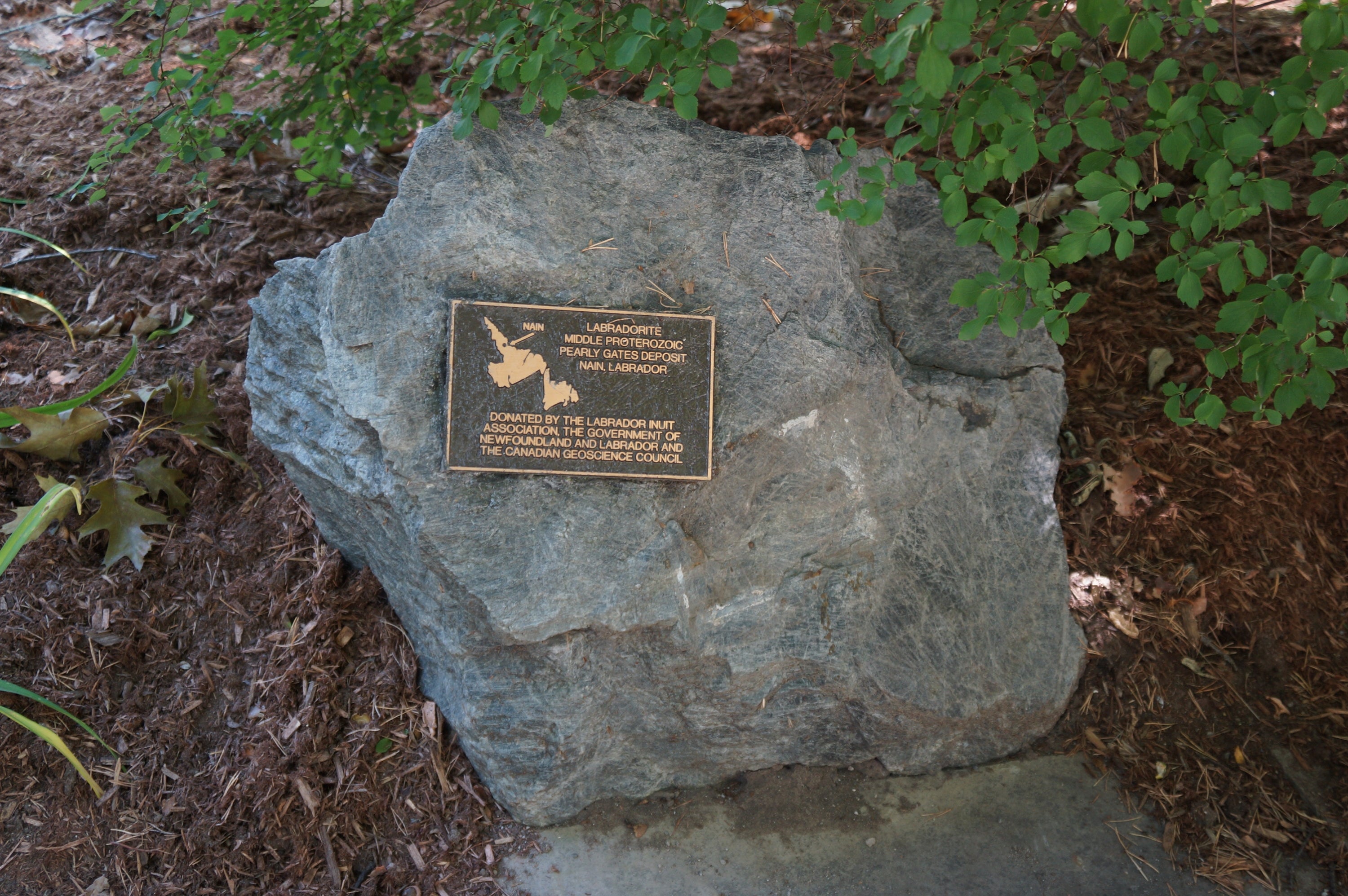 |
56 | Labradorite | Intrusive |
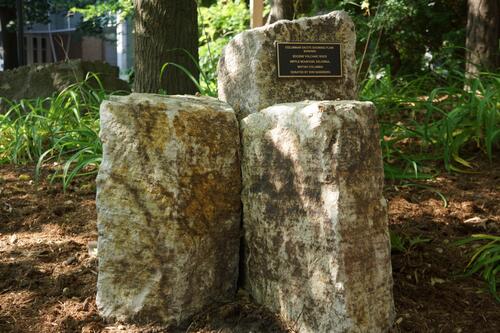 |
57 | Columnar dacite showing flow banding | Extrusive |
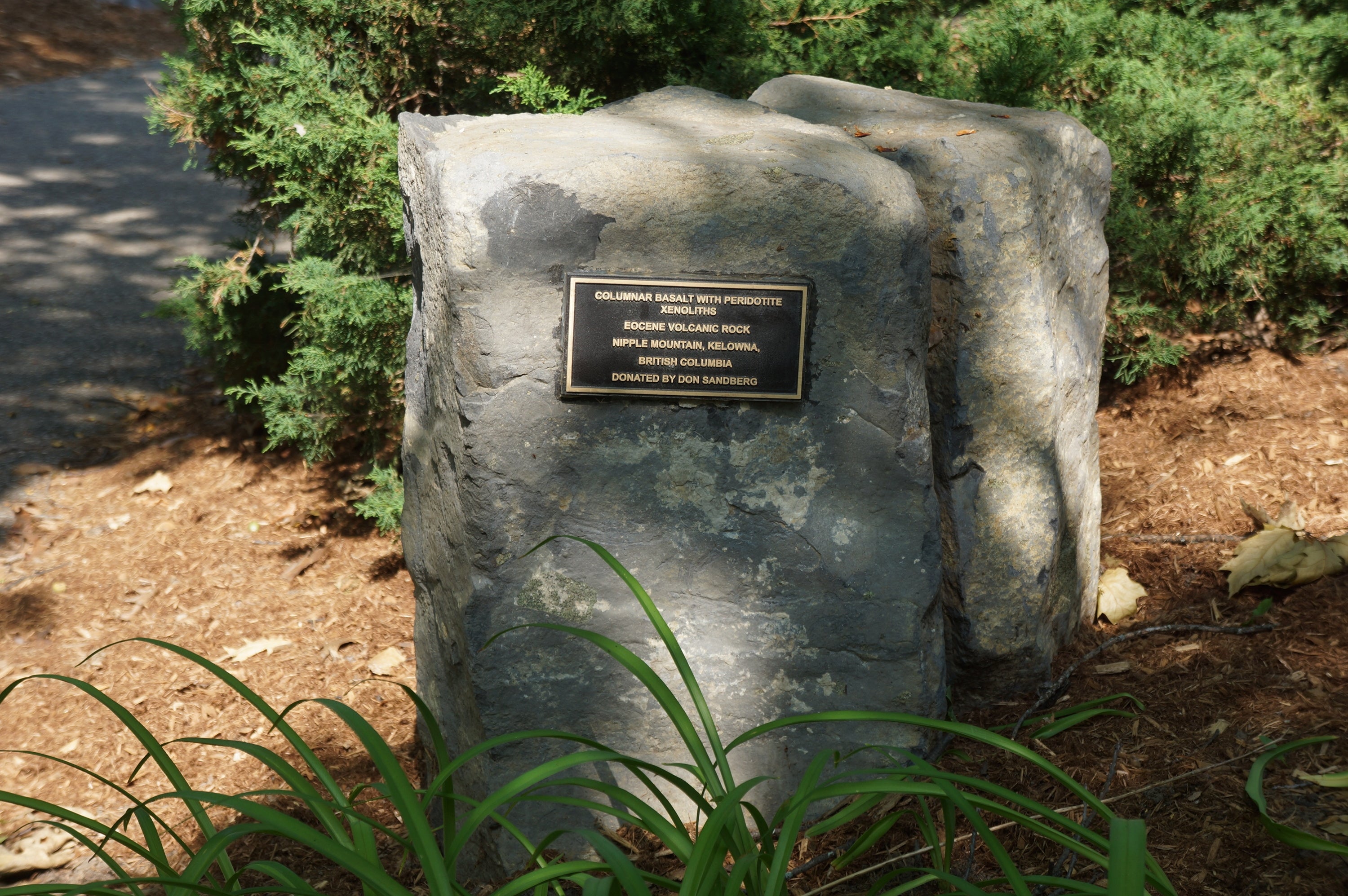 |
58 | Columnar basalt with periodite xenoliths | Extrusive |
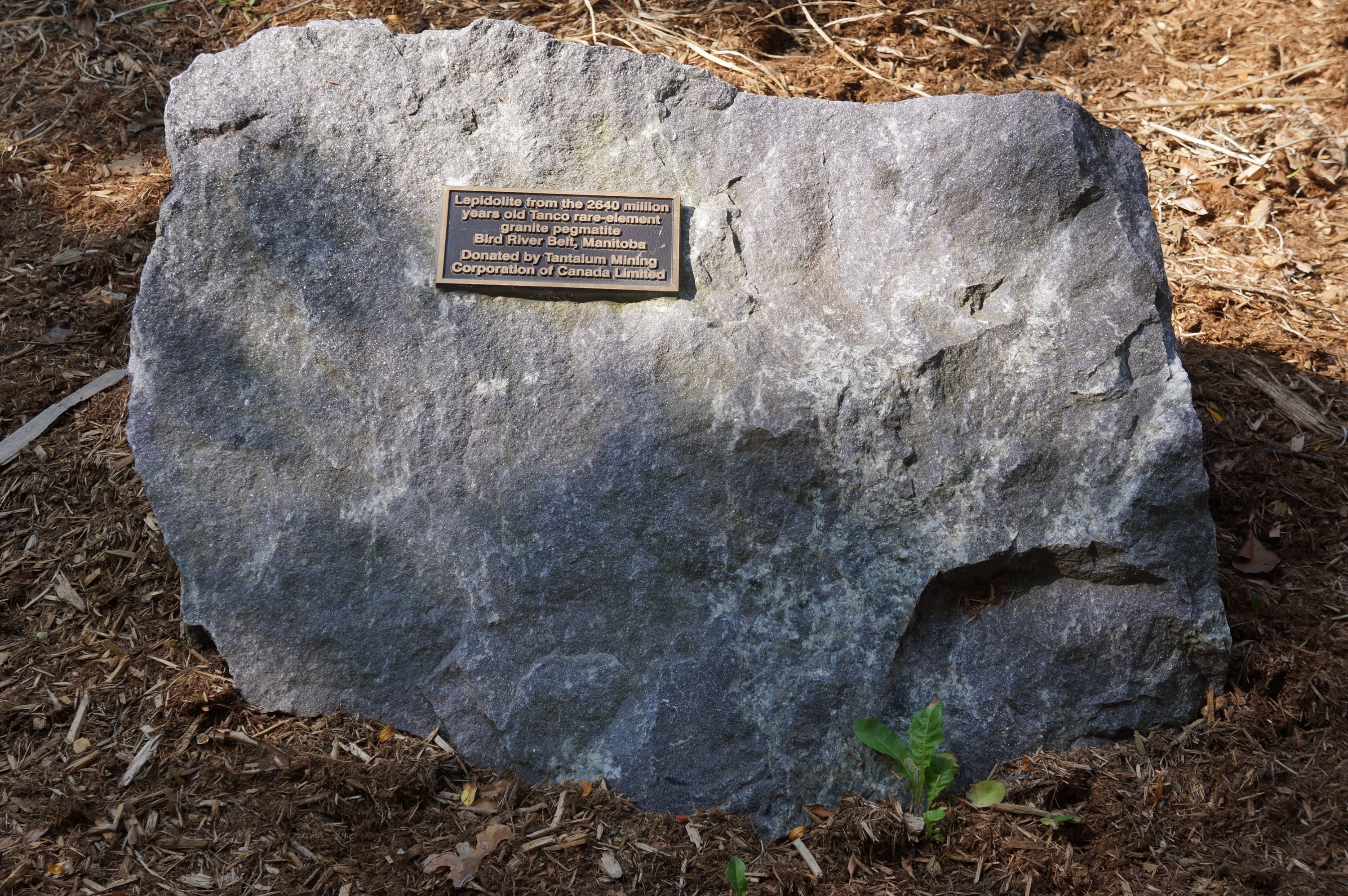 |
61 | Lepidolite | Intrusive |
 |
64 | Porphyritic biotite granite | Intrusive |
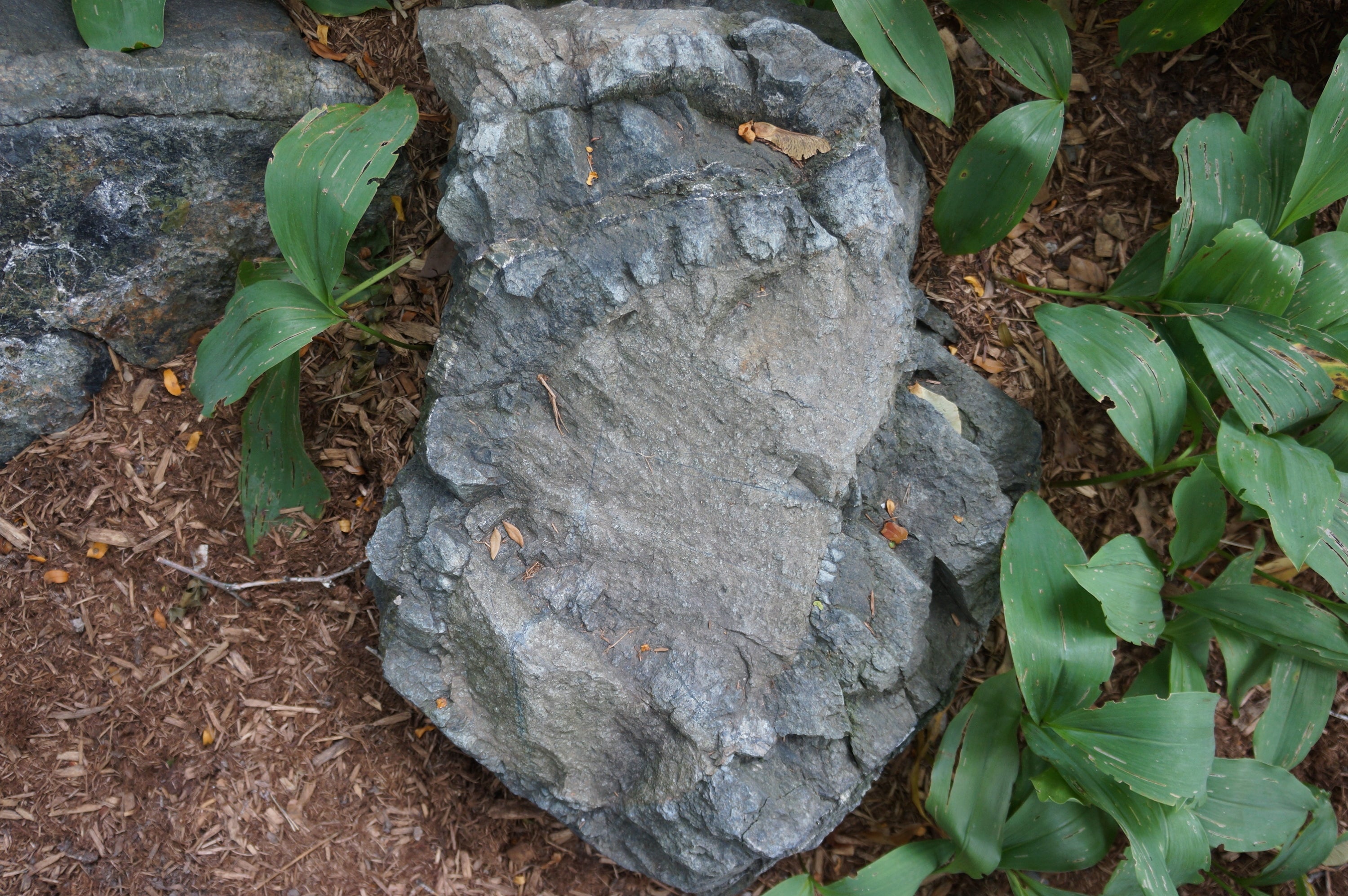 |
67 | Peridotite surrounded by an alteration zone of serpentinite | Intrusive |
| 69 | Garnet-rich gabbroic anorthosite | Intrusive | |
| 72 | St.Georges red granite | Intrusive | |
| 74 | Serpentinized mantle peridotite | Intrusive | |
| 75 | North Mountain basalt columns | Extrusive |
Metamorphic Rocks
Metamorphic rocks form by transforming a pre-existing rock, called a protolith (proto- means first, and -lith means rock), by adding heat and pressure to it. When the protolith experiences high temperatures and pressures, the minerals that made up the protolith undergo physical and chemical changes, which create completely new minerals. These new minerals that form will eventually cool and create a completely new rock. Think of it like a caterpillar entering its cocoon, and after some time, it emerges as a butterfly!
Depending on where metamorphism is occurring, the rocks experience different levels of heat and pressure, described as the metamorphic grade. The rocks can be low, medium, or high-grade metamorphic rocks. The higher the metamorphic grade, the higher the temperature and amount of pressure the rocks were exposed to!
Metamorphic rocks can also be described based on the internal structures of the rock. In some cases, as the rock experiences pressure, the minerals that make up the rock get squashed and can be re-oriented within the rock. This can make the minerals align in the same direction and form "bands" or "stripes" of minerals, and it is called a foliated metamorphic rock. In other cases, the minerals that make up the rock do not experience the same amounts of pressure, and the minerals do not get squashed. In this case, "bands" or "stripes" are not present in the rock, and the rock is called a non-foliated metamorphic rock.
| Picture | Rock Number | Rock Name | Metamorphic Grade | Foliation |
|---|---|---|---|---|
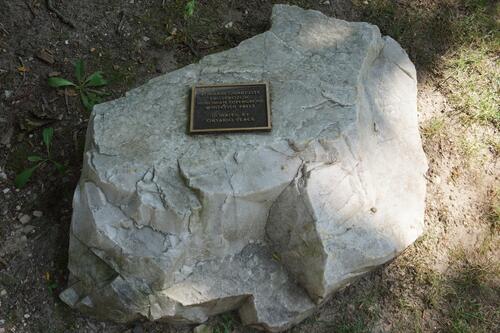 |
2 | Lorrain quartzite | Medium to high grade | Non-foliated |
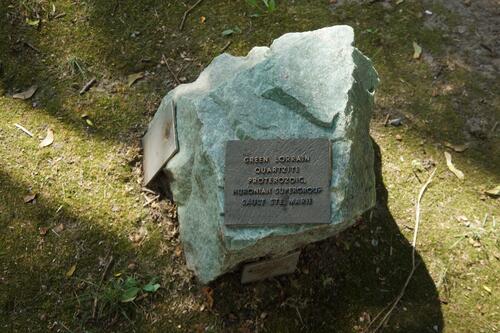 |
3 | Green Lorrain quartzite | Medium to high grade | Non-foliated |
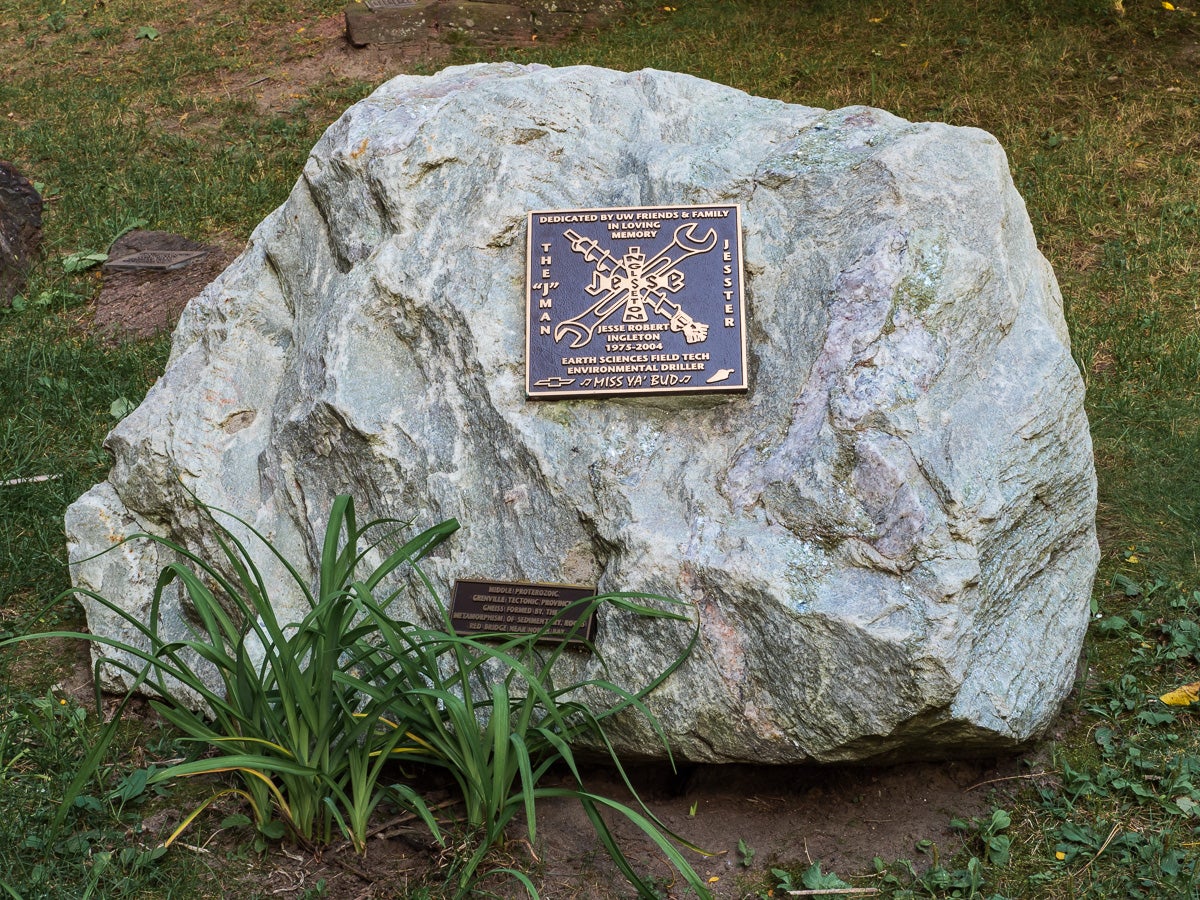 |
10 | Gneiss | High grade | Foliated |
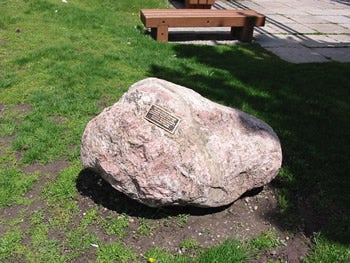 |
11 | Granite gneiss boulder | High grade | Foliated |
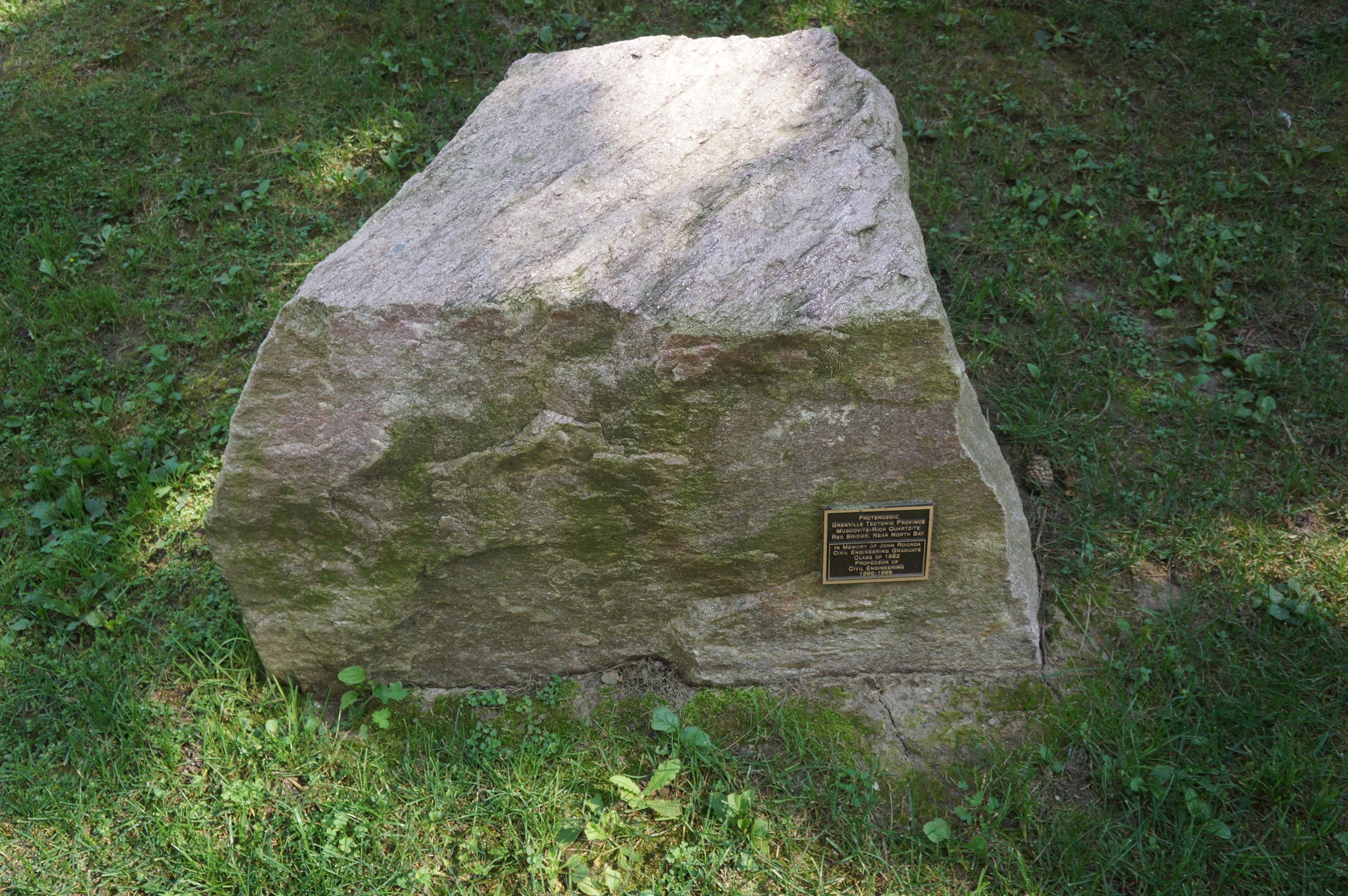 |
12 | Muscovite-rich quartzite | Medium to high grade | Non-foliated |
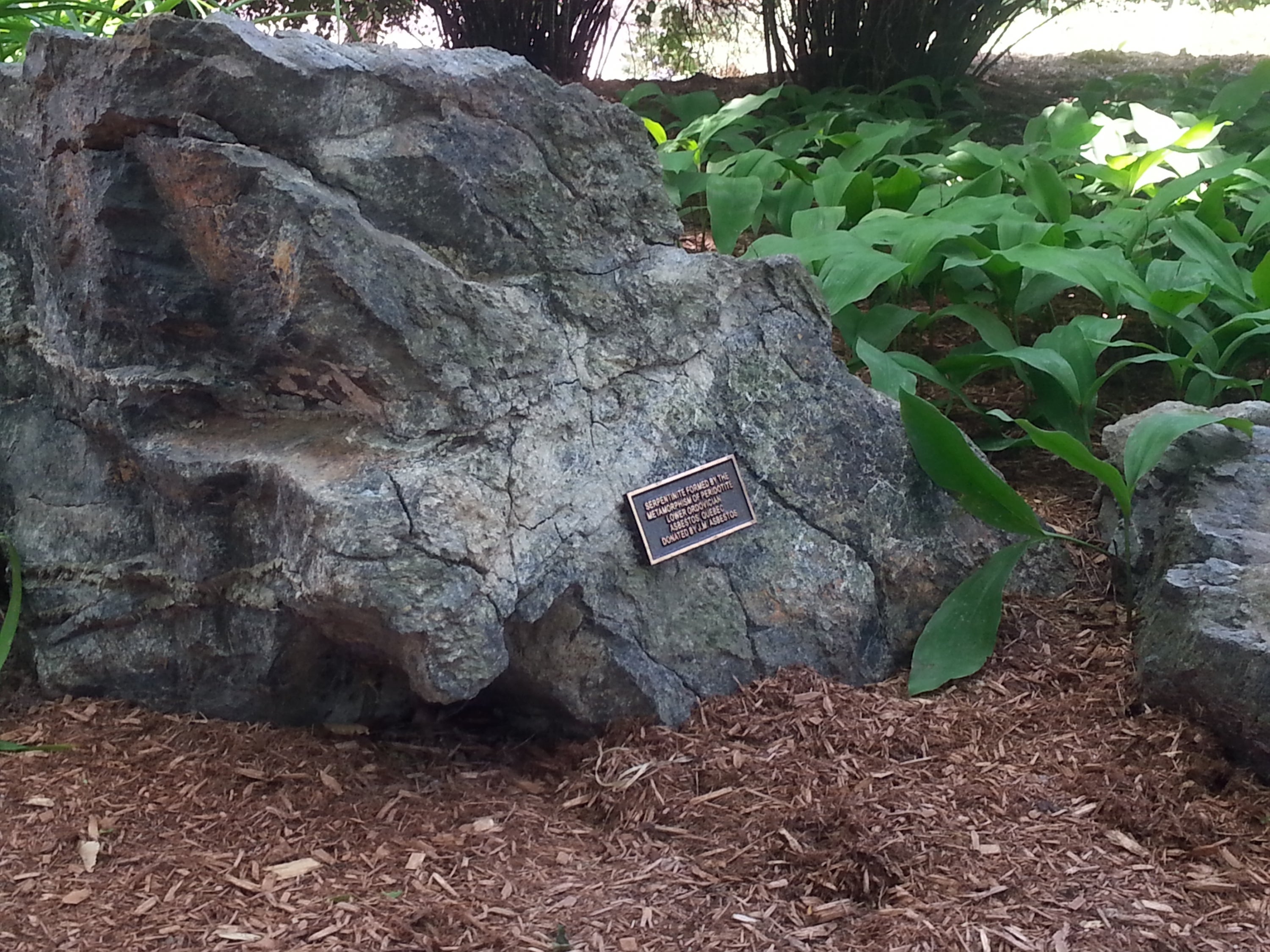 |
13 | Quartz Carbonate Fuchsite Serpentinite | Medium grade | Non-foliated |
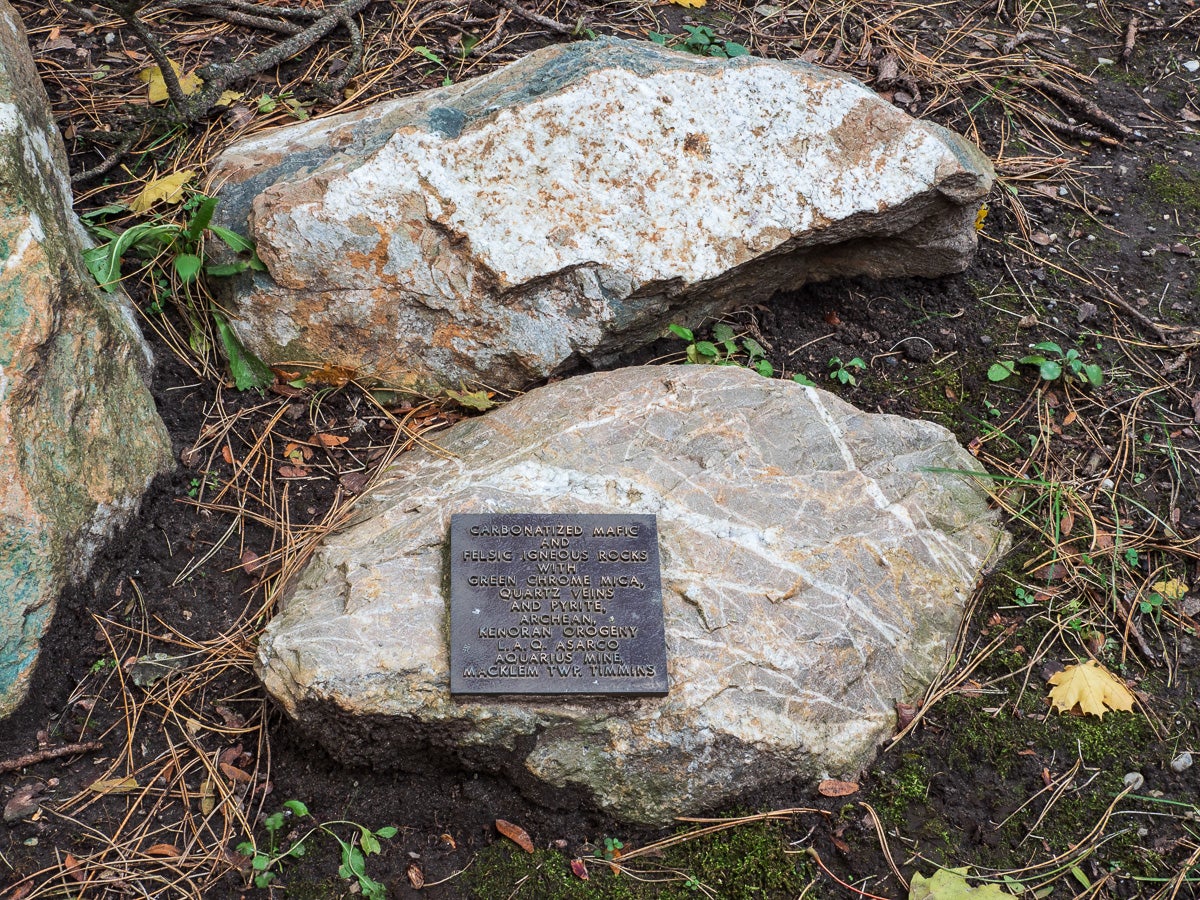 |
15 |
Carbonated Mafic and Felsic Igneous Rocks with Green chrome Mica Quartz veins and Pyrite |
Low to medium grade | Non-foliated |
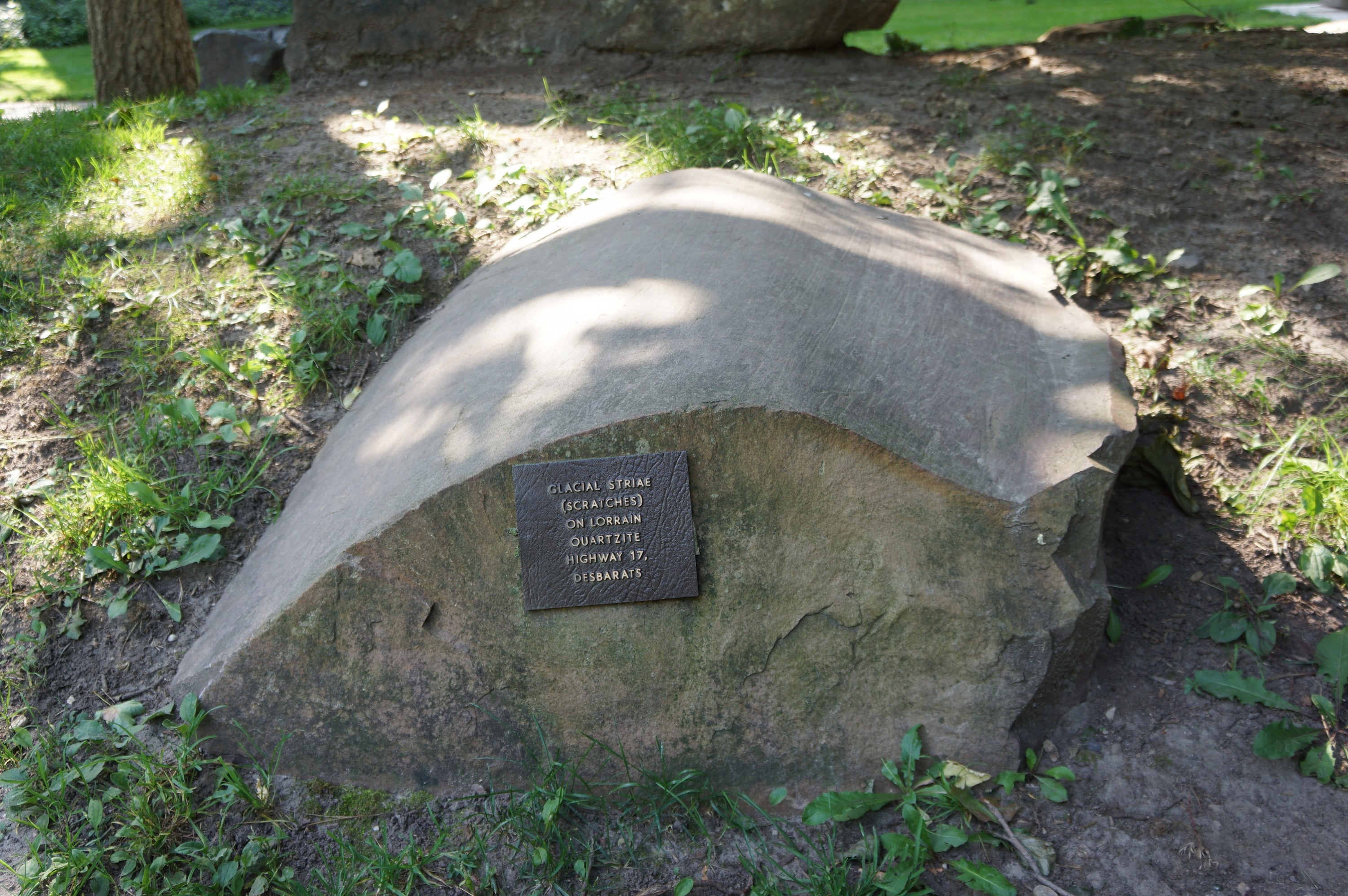 |
32 | Glacial striae (scratches) on Lorrain quartzite | Medium to high grade | Non-foliated |
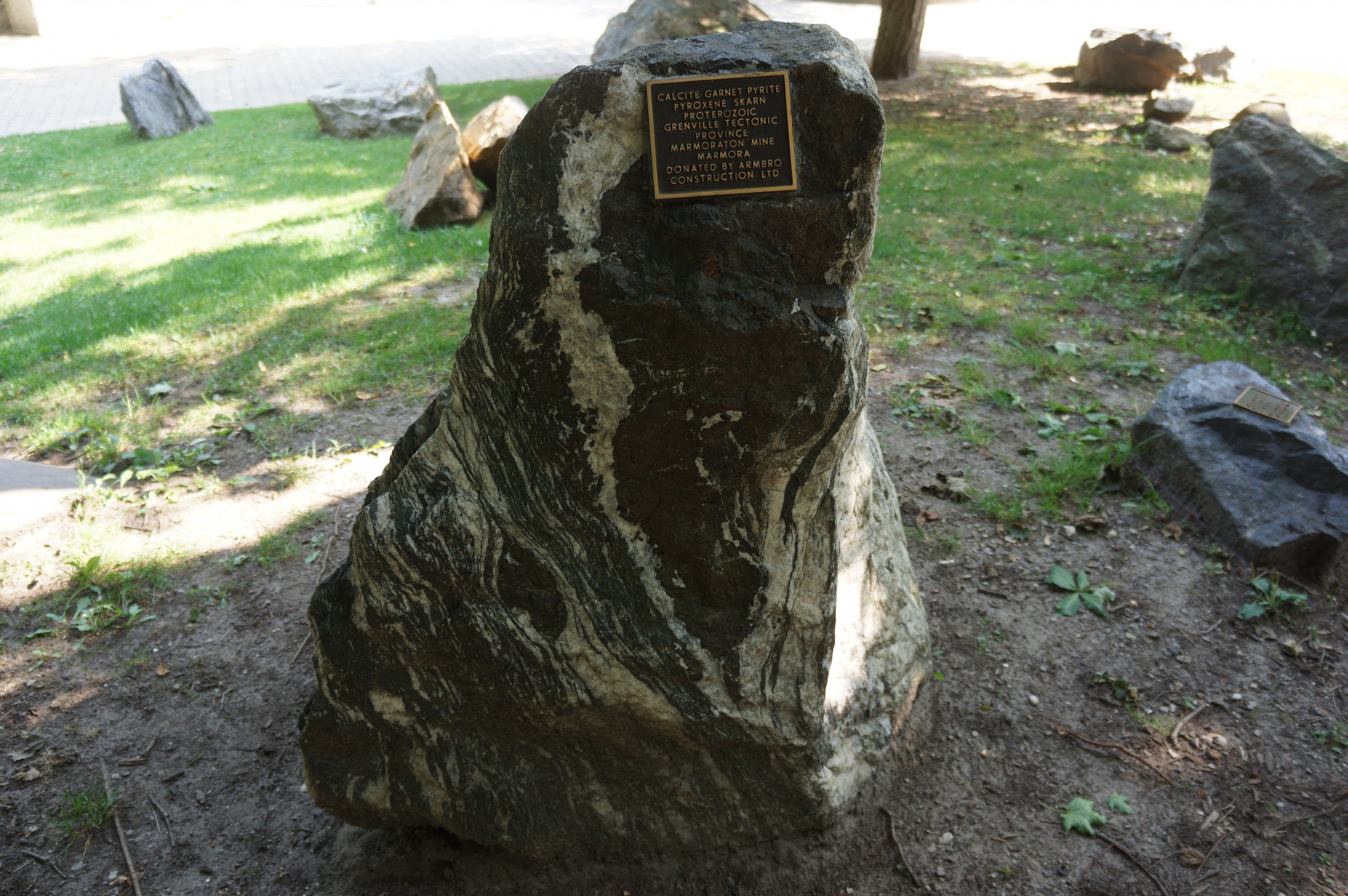 |
33 | Calcite garnet pyrite pyroxene skarn | Low grade | Non-foliated |
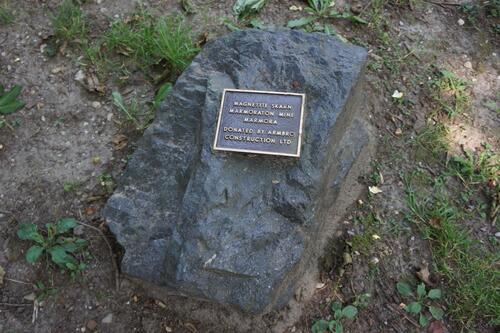 |
34 | Magnetite skarn | Low grade | Non-foliated |
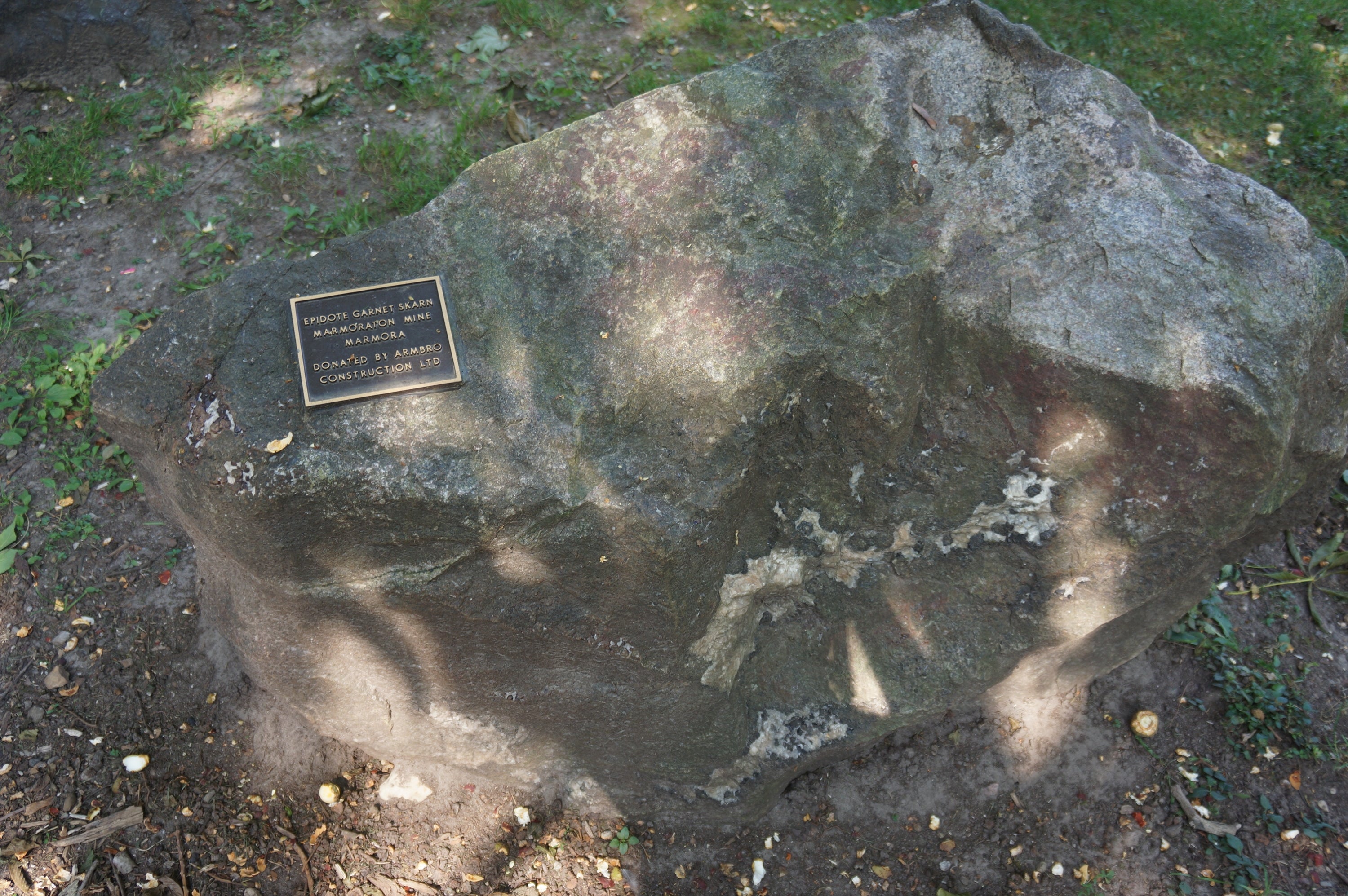 |
36 | Epidote garnet skarn | Low grade | Non-foliated |
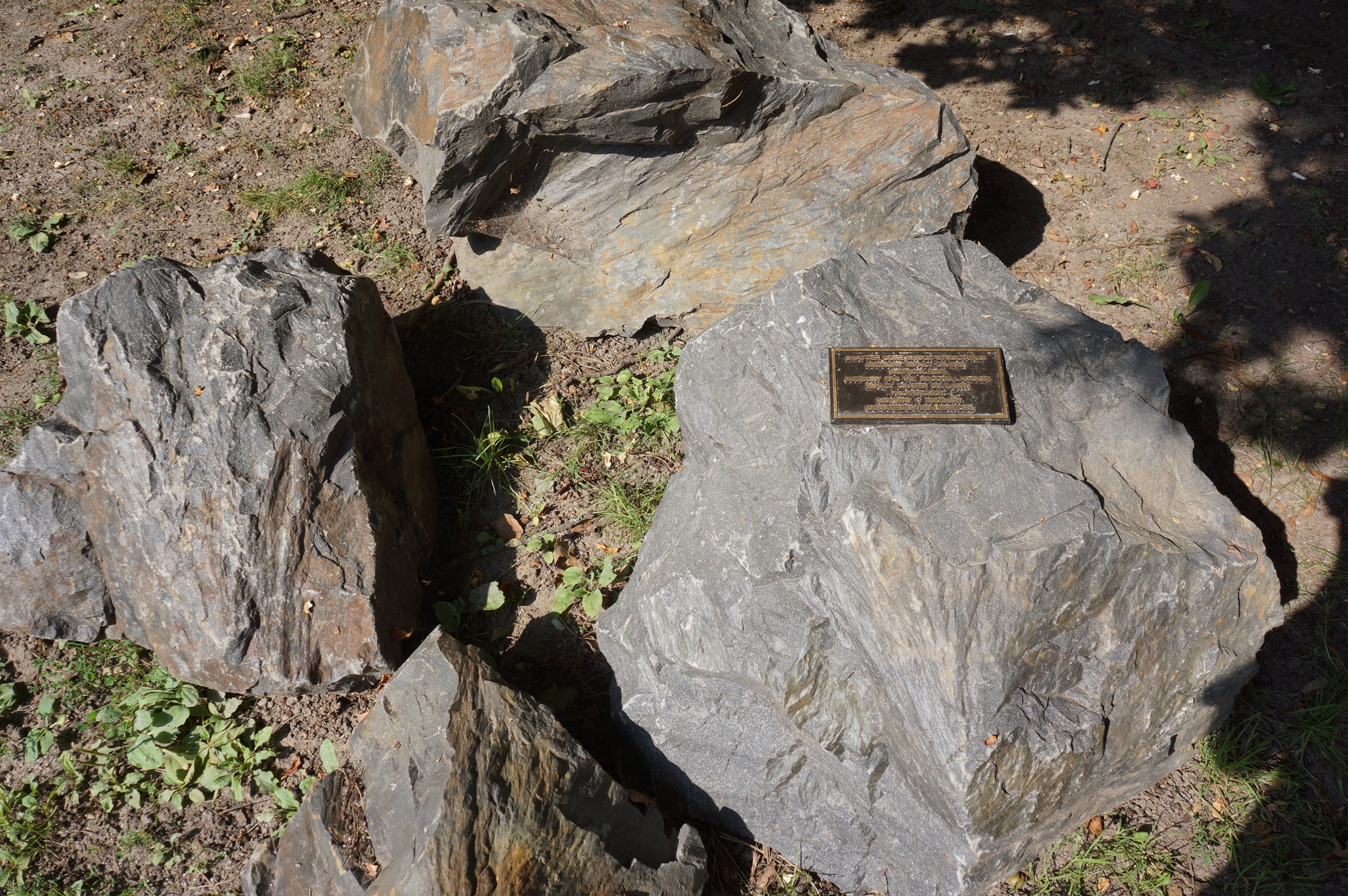 |
40 | Shatter cone shock structures Sudbury Impact Crater (astrobleme) |
Very high grade (specifically, impact metamorphism) |
Non-foliated |
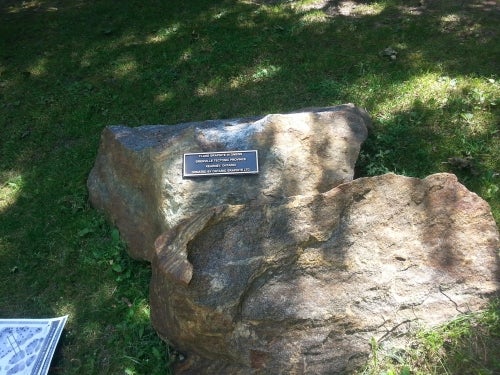 |
42 | Flake graphite in gneiss | High grade | Foliated |
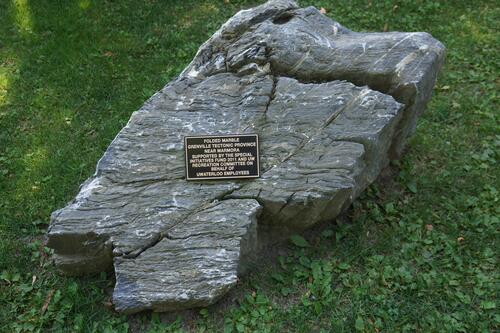 |
44 | Folded marble | Low to high grade | Non-foliated |
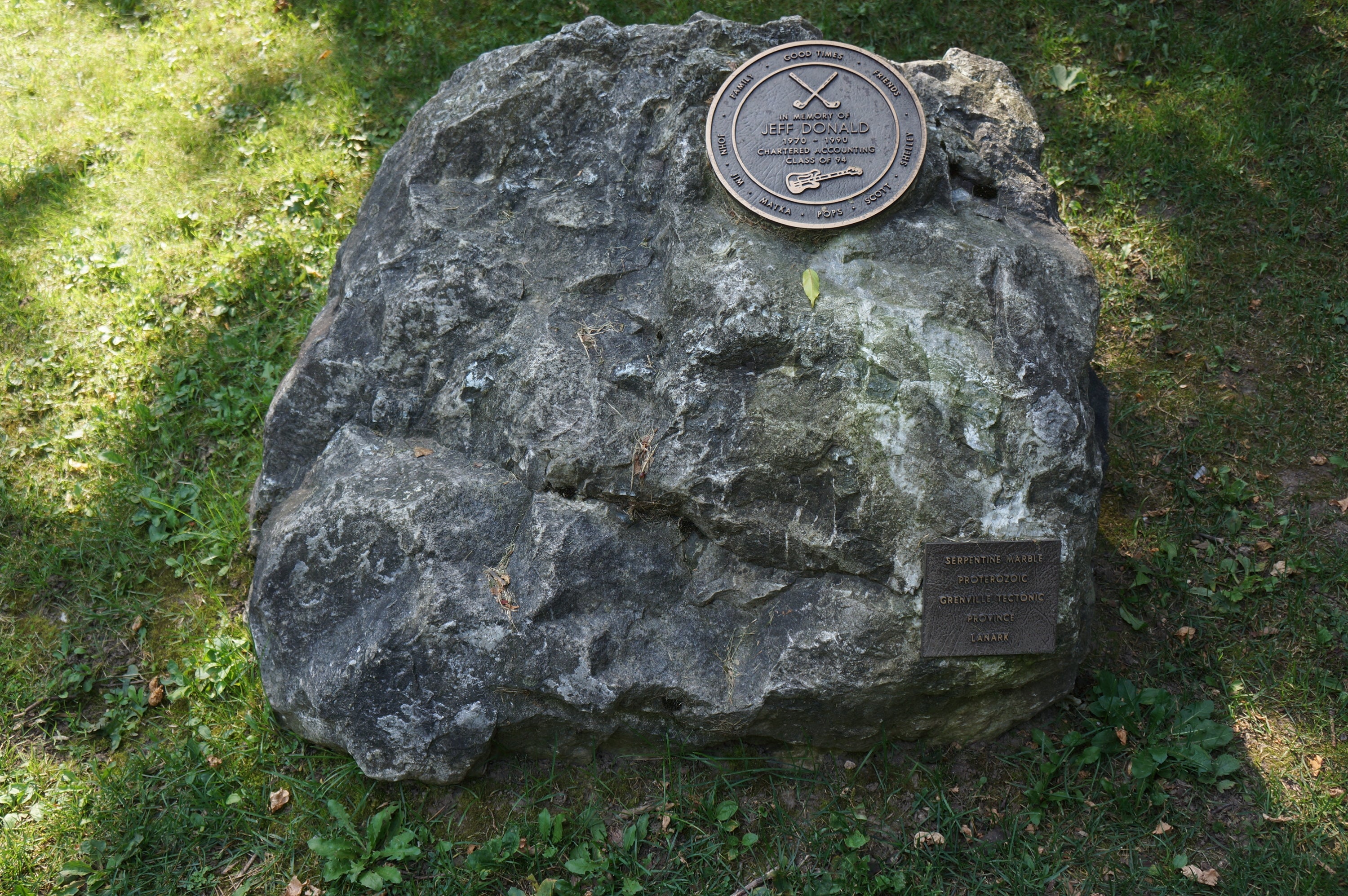 |
45 | Serpentine marble | Low to high grade | Non-foliated |
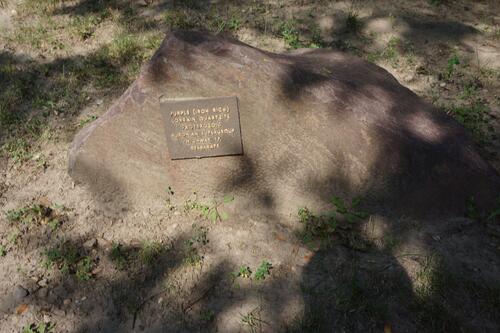 |
53 | Purple (iron-rich) Lorrain quartzite | Medium to high grade | Non-foliated |
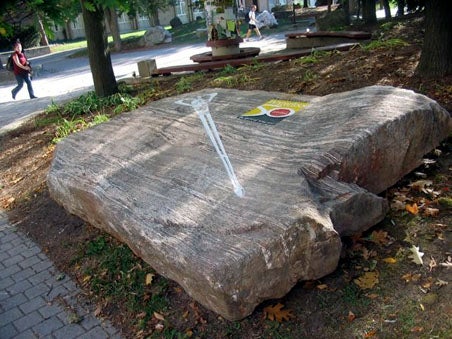 |
59 | 50th Anniversary Gneiss | High grade | Foliated |
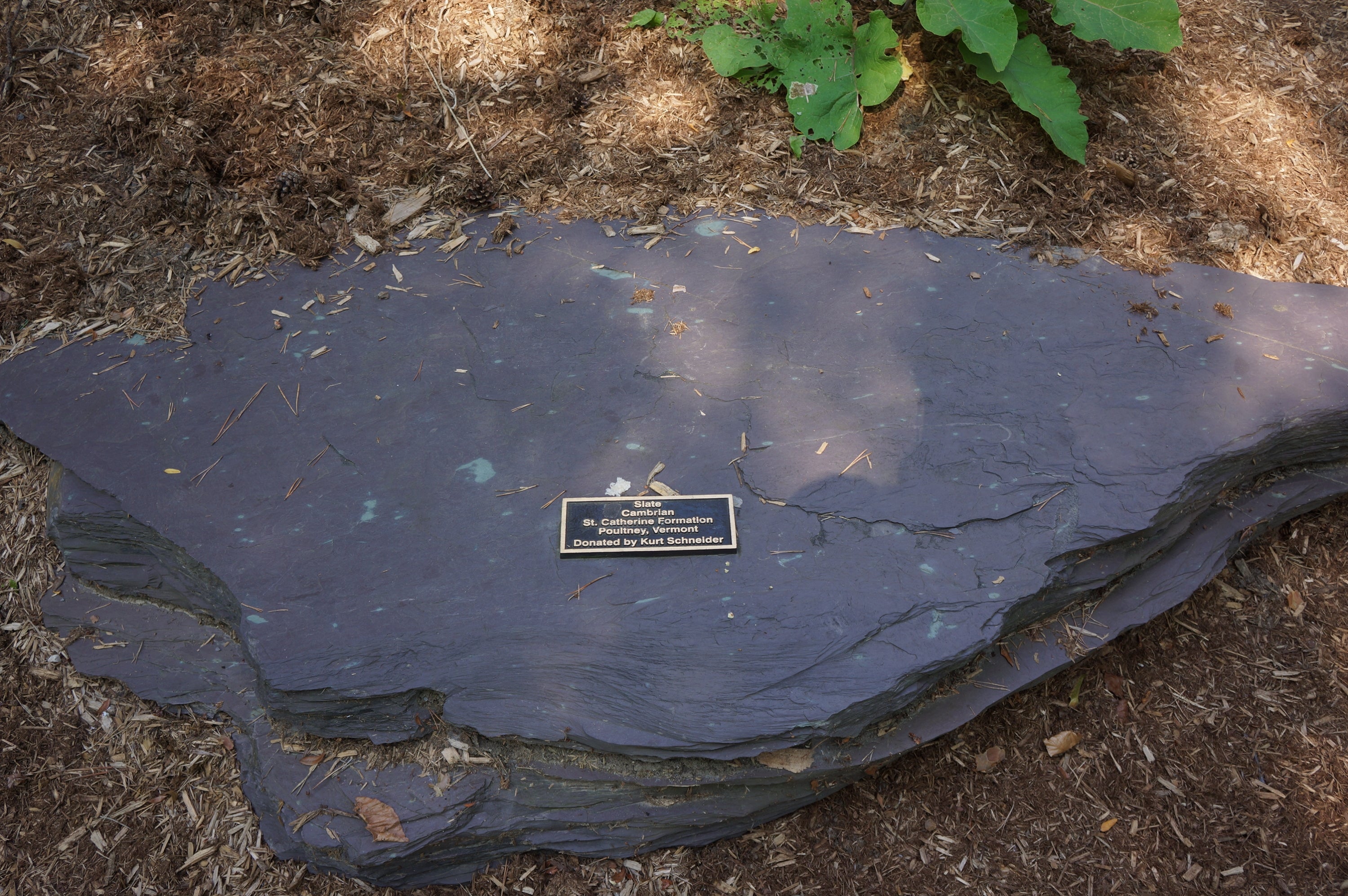 |
60 | Slate | Low grade | Foliated |
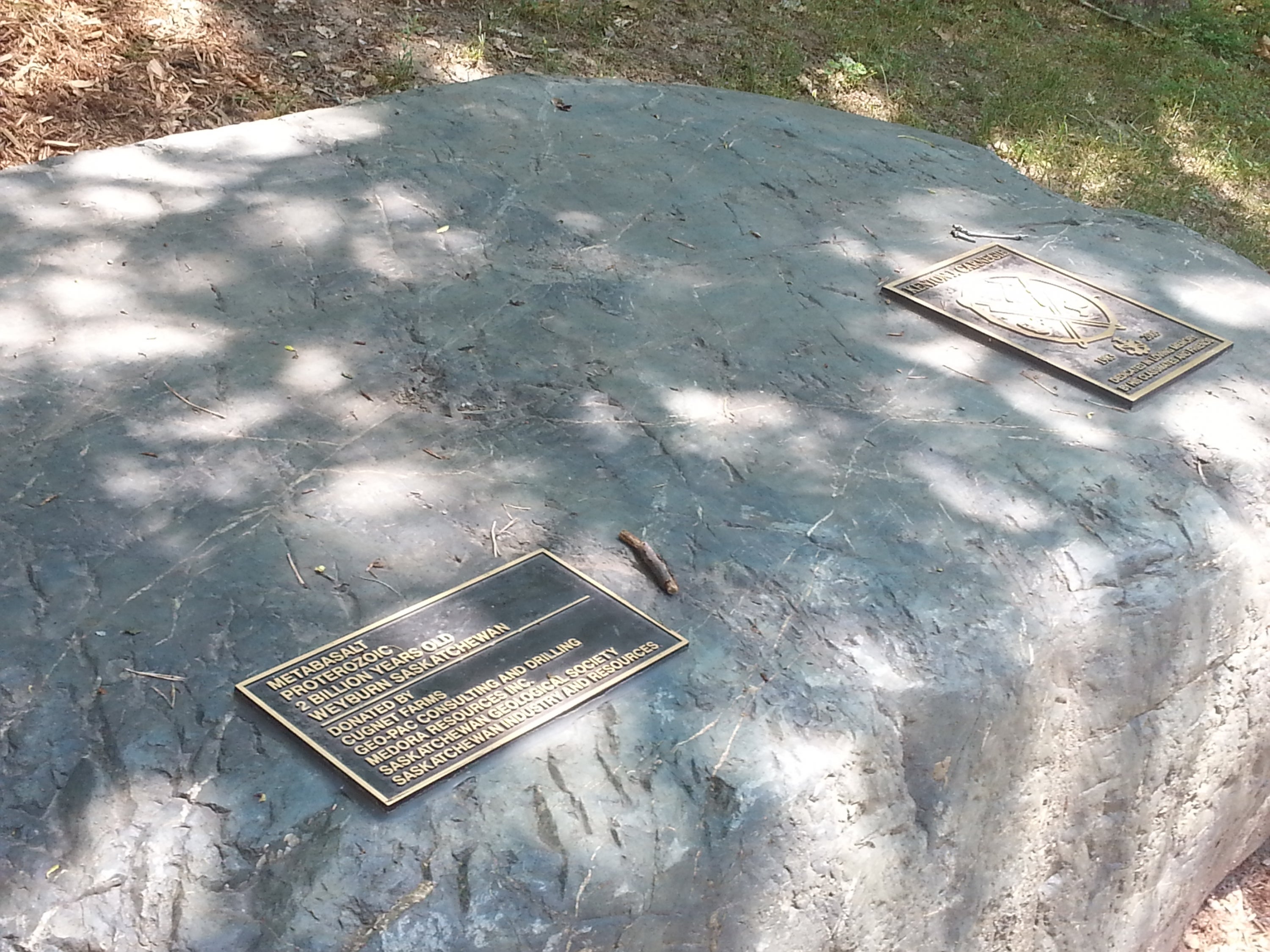 |
62 | Metabasalt | Low grade | Non-foliated |
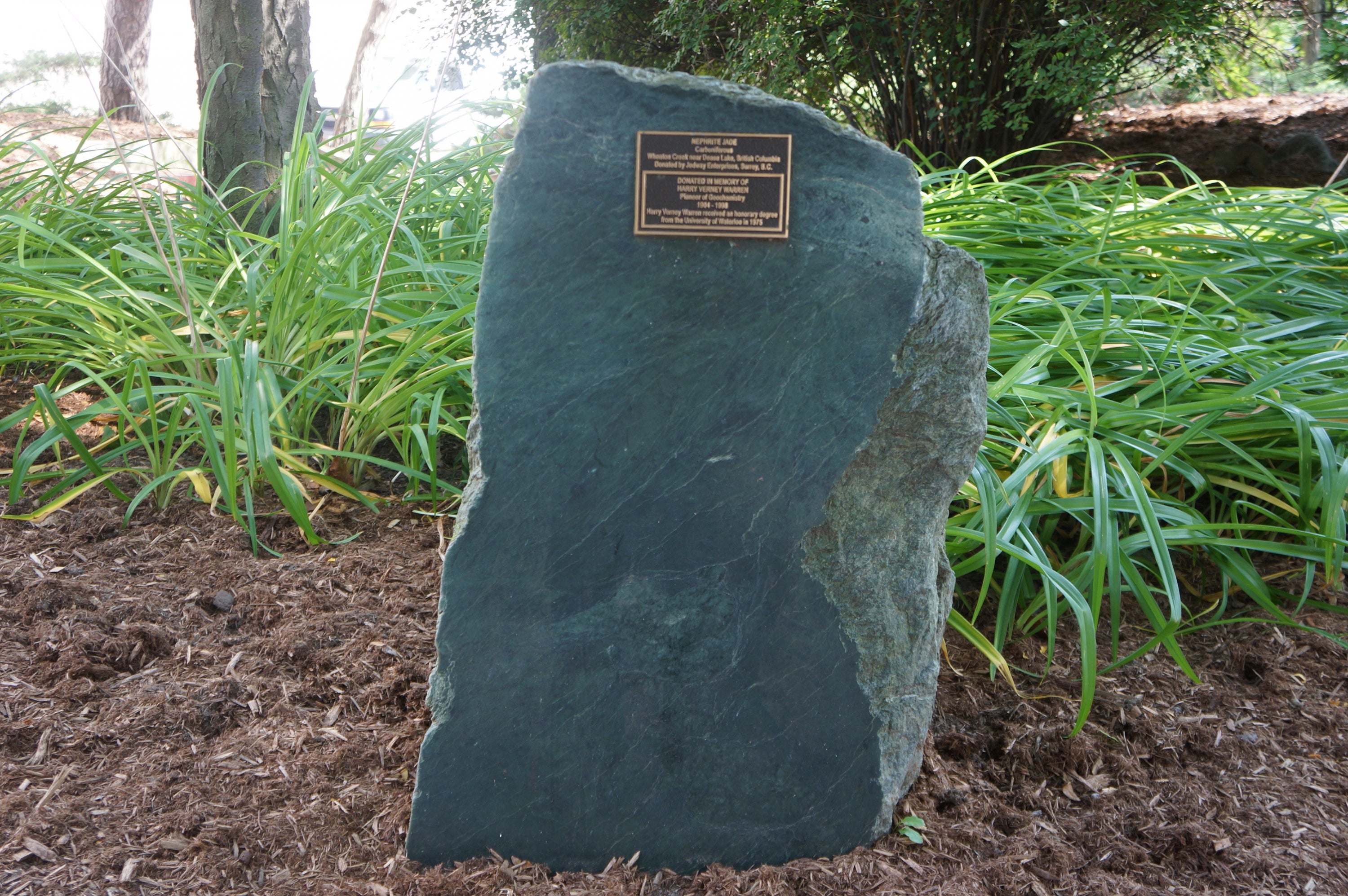 |
65 | Nephrite Jade | High grade | Non-foliated |
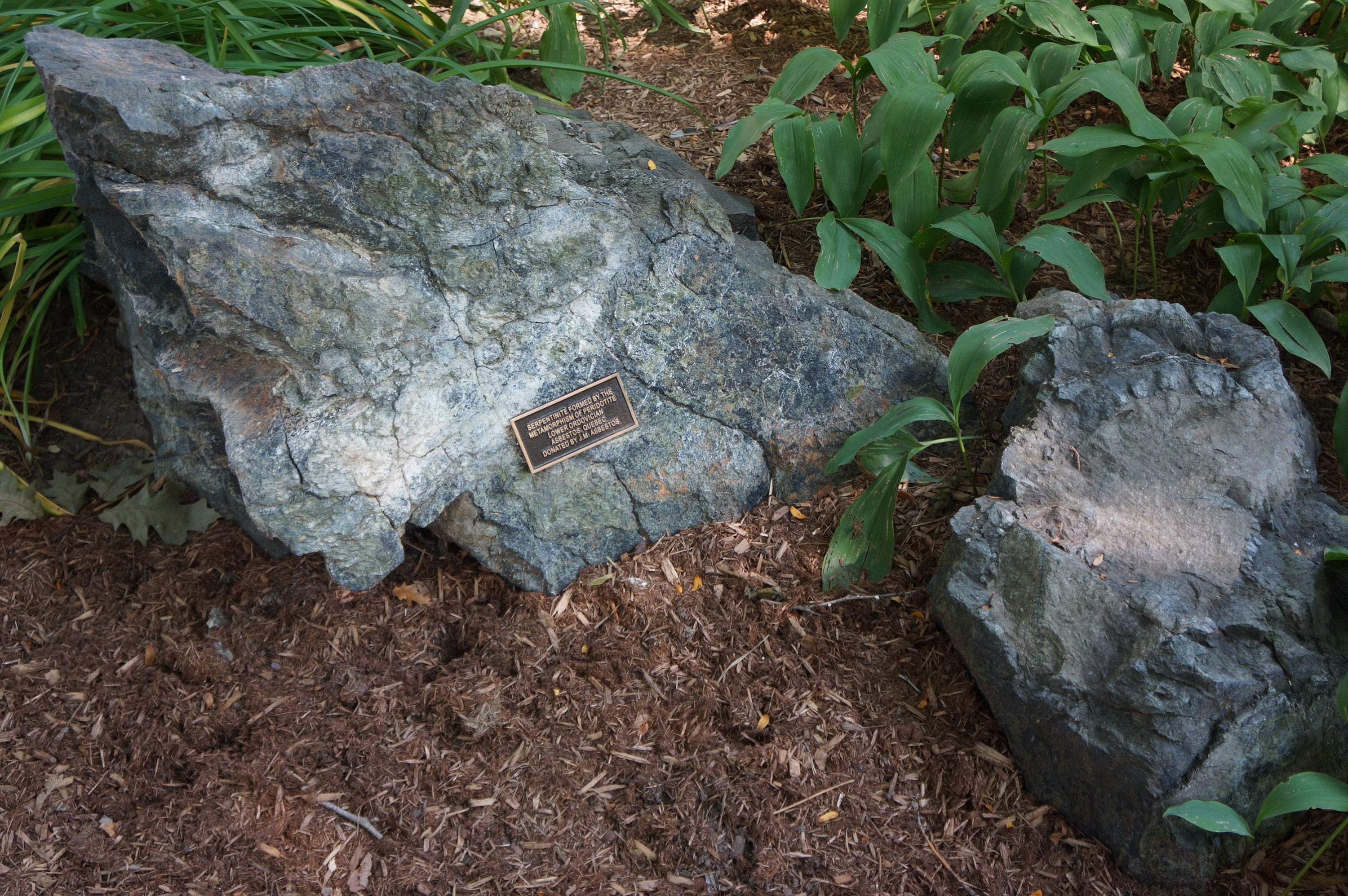 |
66 | Serpentinite | Low grade | Foliated |
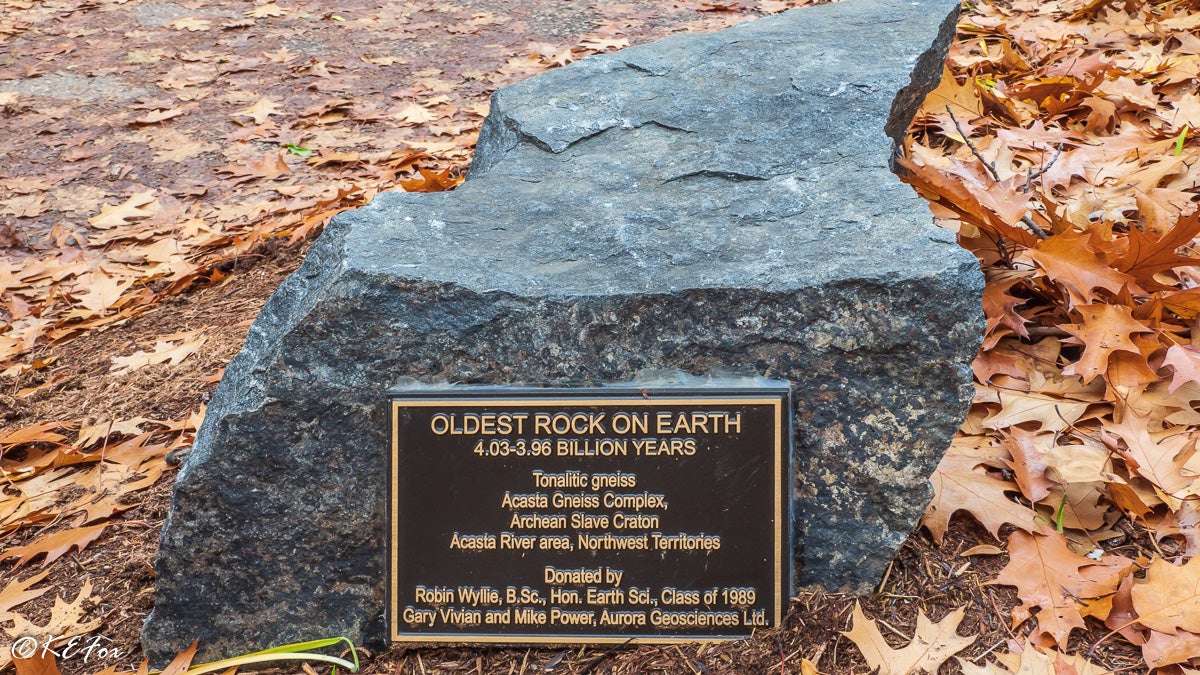 |
71 | Oldest Rock in the World - tonalitic gneiss | High grade | Foliated |
Ores
Ore is a type of rock that is made of a combination of minerals that contain metals or elements that are important for making materials used in our everyday lives. Ore is the raw product that is extracted from mining operations. It is then processed to separate the valuable minerals from the invaluable minerals, which are then sold to make a profit.
| Picture | Rock Number | Rock Name |
|---|---|---|
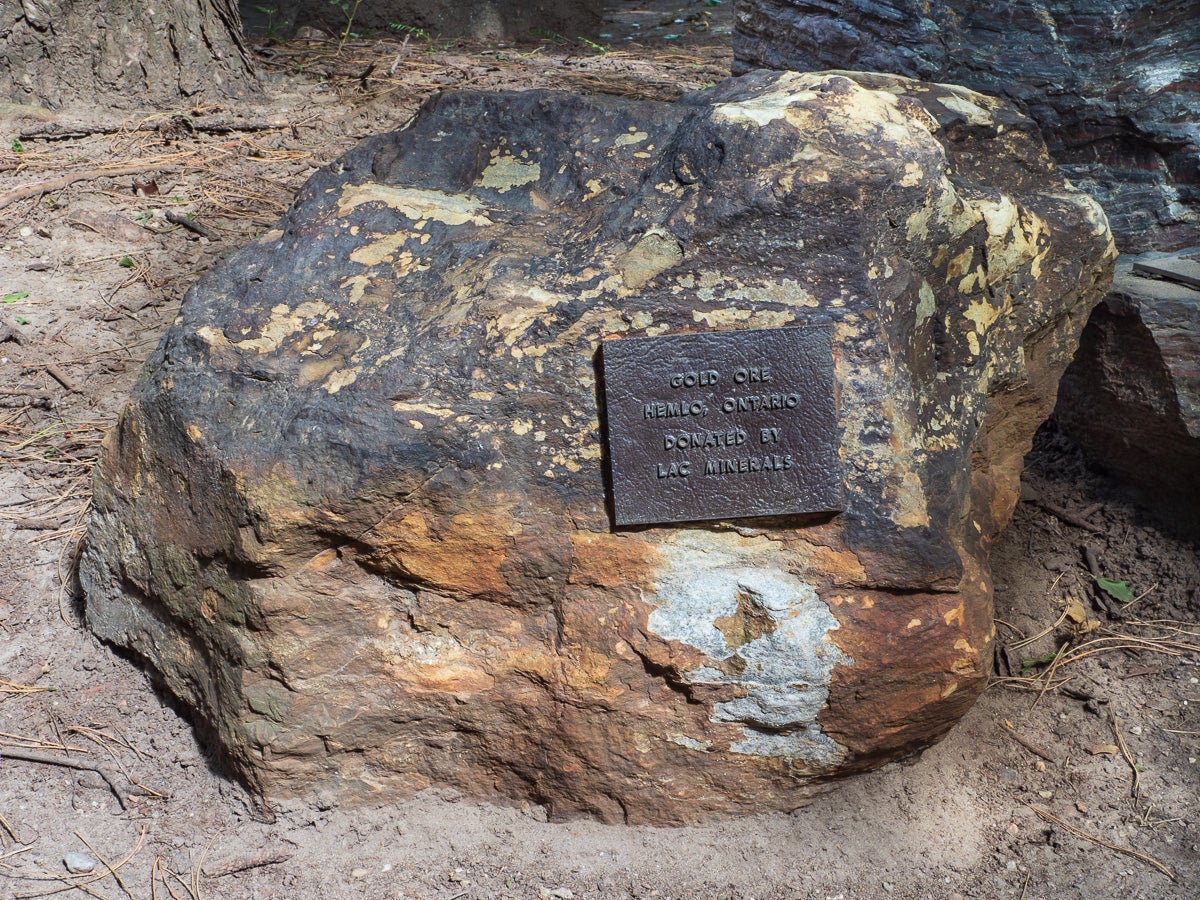 |
19 | Gold ore |
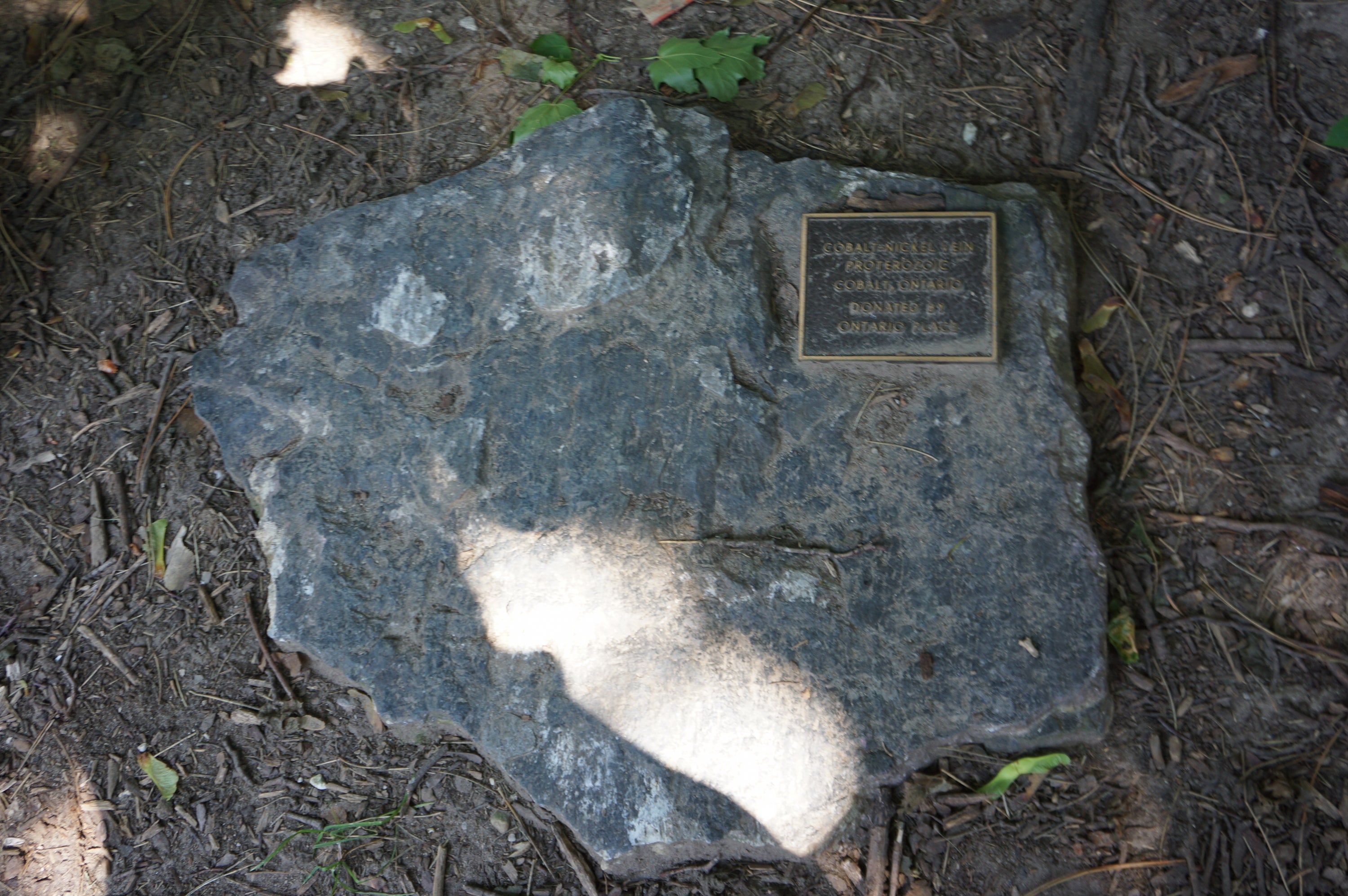 |
23 | Cobalt-Nickle Vein |
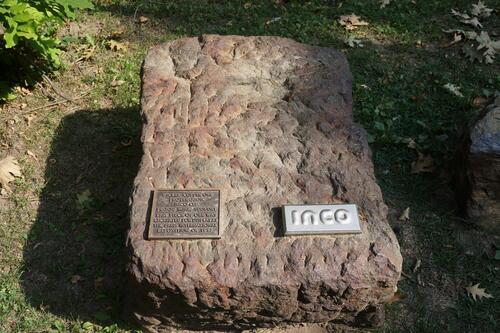 |
48 | Nickle-copper ore |
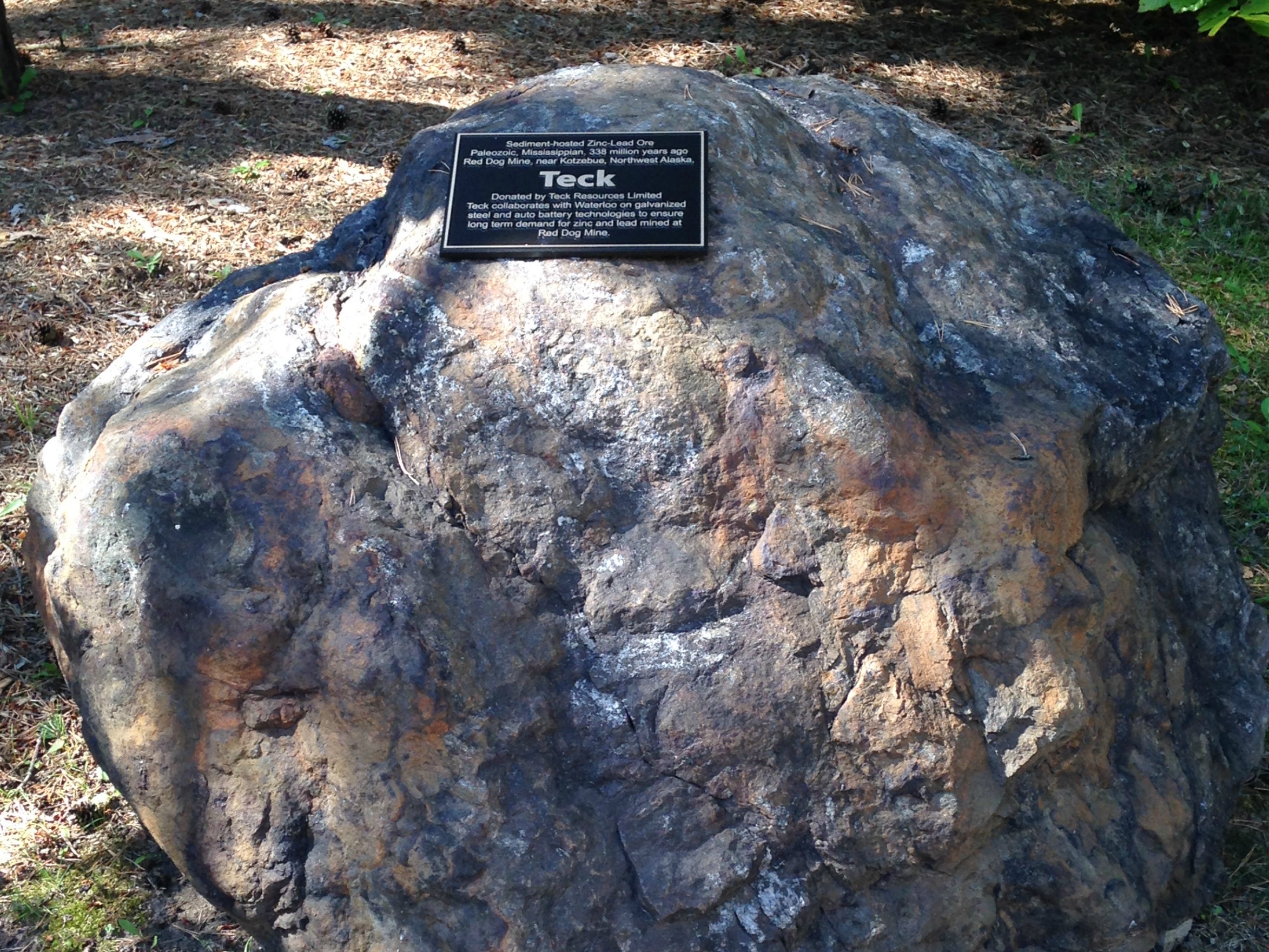 |
73 | Sediment-hosted zinc-lead ore |
| 79 | Lead-zinc ore | |
| 80 | Massive sulphide ore |
Fossils
Fossils are the preserved remains, or traces of remains, of ancient species. Fossils are not the remains of the organism itself, but are rocks!
| Picture | Rock Number | Rock Name |
|---|---|---|
| 76 | Petrified Wood |